What is living?
Chapter 1
The living world
What is living?
Biology is the study of biological organisms and processes. There is an incredible diversity of living organisms around the globe. Any system capable of executing processes including feeding, metabolizing, excreting, breathing, moving, growing, reproducing, and responding to external stimuli is characterized as living. Living refers to anything that exhibits the attributes of life. Growth, reproduction, metabolism, cellular organization, and consciousness are the basic features of life. On the other hand, self-consciousness is seen as the defining quality of living organisms. Let us take a detailed look at all the unique features of living organisms.
(A) Growth:
Growing is a process that occurs in all living creatures. The twin features of growth are an increase in bulk and an increase in the number of individuals. Cell division is a process that enables a multicellular organism to grow. Plants grow by the division of cells constantly throughout their lives. This growth is only visible in animals up to a particular age. Cell division, on the other hand, happens in some tissues to replace lost cells. Cell division is responsible for the growth of unicellular creatures. Growth and reproduction are mutually exclusive phenomena in the majority of higher animals and plants. It's important to note that growth is defined as a rise in bodily mass.
If we use body mass as a criterion for growth, non-living objects grow as well. Mountains, boulders, and sand mounds are all formed through erosion. Non-living objects, on the other hand, demonstrate this type of growth by accumulating material on the surface. Growth occurs from the inside out in living organisms. As a result, growth cannot be considered the only distinguishing characteristic of living beings. It must be described under what conditions it can be observed in all live species before we can grasp that it is a property of living systems. A dead creature can’t grow.
(B) Reproduction:
In multicellular organisms, reproduction refers to the generation of offspring with characteristics that are comparable to those of their parents. It refers to sexual reproduction invariably and implicitly. Asexual reproduction is also used by living species. Fungi, for example, can quickly proliferate and spread because they produce millions of asexual spores. We see budding in smaller species like yeast and hydra. True regeneration is observed in Planaria (flatworms), in which a fractured organism regenerates the missing section of its body and transforms into a new creature. Filamentous algae and moss protonema may all easily reproduce through fragmentation. In unicellular organisms such as bacteria, unicellular algae, and Amoeba, reproduction takes place through cell division (fission) which is synonymous with growth, or an increase in the number of cells.
Growth has already been characterized as a rise in cell number or mass. As a result, we find that the definitions of these two terms – growth and reproduction – are not always apparent in single-celled organisms. Furthermore, a large number of species do not reproduce (mules, sterile worker bees, infertile human couples, etc). As a result, reproduction alone cannot be considered a universal distinguishing trait of living entities. Of course, no non-living object can reproduce or replicate on its own.
(C) Metabolism:
Chemicals are found in all living things. Small and large compounds of diverse classes, sizes, functionalities, and other characteristics are constantly created and transformed into new biomolecules. Chemical or metabolic reactions are involved in these transformations. All living creatures, whether unicellular or multicellular, have millions of metabolic events going on at the same time. Metabolism is found in all plants, animals, fungi, and microorganisms. Metabolism is the sum of all chemical events that take place in our bodies. Metabolism does not exist in non-living objects.In cell-free systems, metabolic events can be demonstrated outside of the body. An isolated metabolic reaction(s) performed in a test tube outside the body of an organism is neither life nor non-living. While metabolism is a defining property of all living organisms, isolated metabolic reactions, referred to as in vitro, are not live objects but living reactions. As a result, the body's cellular organization is a fundamental defining property of all life forms.
(D) Self-consciousness:
The ability of all living organisms to detect their surroundings or environment and respond to these environmental stimuli, which can be physical, chemical, or biological, is perhaps the most evident and technically complex attribute. Our sense organs allow us to perceive our surroundings. External elements such as light, water, temperature, other species, contaminants, and so on affect plants. Environmental signals can be sensed and responded to by all species, from prokaryotes to the most complex eukaryotes. Seasonal breeders, both plants and animals, are affected by photoperiod. Chemicals that enter an organism's body are dealt with in the same way by all species. As a result, all organisms are 'conscious' of their surroundings. Humans are the only organisms that are aware of themselves or have self-consciousness.As a result, consciousness becomes the defining characteristic of living beings.
Underlying interactions are responsible for all life phenomena. Tissue properties are not found in the constituent cells but emerge as a result of interactions between them. Similarly, features of cellular organelles are not contained in the organelle's molecular elements but occur as a result of interactions among the organelle's molecular components. Emergent features emerge at a higher level of organization as a result of these interactions. This phenomenon occurs at all levels of the organizational complexity hierarchy.
As a result, living creatures can be described as self-replicating, evolving, and self-regulating interacting systems that can respond to external inputs. The narrative of life on Earth is told via biology. Biology is the study of how living species have evolved on our planet. All living species, present, past, and future, are related to one another to differing degrees via the sharing of similar genetic material.
Need for classification.
Diversity in the living world
The biological variety and variability of life on Earth are referred to as biodiversity. Looking around, one will see a wide range of living organisms, including potted plants, insects, birds, pets, and other animals and plants. Other species are invisible to the naked sight but are all around us. A species is represented by each different type of plant, animal, or organism you see. Between 1.7 and 1.8 million species have been identified and described. This refers to the diversity of species on the planet or the quantity and varieties of creatures that exist.
There are millions of plants and animals throughout the world that are known by their regional names. These regional names might differ from one location to the next, even within a country. When referring to organisms, such names can cause confusion. As confuse necessary to standardize the naming of living entities so that they are known by the same name all over the world. This is referred to as nomenclature.
This naming or nomenclature is only achievable if the organism is correctly characterized and we know to which organism the term refers. This is calledidentification.
Scientists have developed processes to assign a scientific name to each known organism in ordering the process. Scientific names for plants are determined by agreed-upon principles and criteria outlined in the International Code for Botanical Nomenclature (ICBN). Taxonomists have developed the International Code of Zoological Nomenclature (ICZN) for animals. Each creature has just one name thanks to the scientific names. Any organism's description should allow anyone (from all over the world) to come up with the same name. They also check to see if the name has been used for any other organism.
To give known creatures scientific names, biologists use broadly accepted rules. Each name is made up of two parts: a generic name and a specific epithet. Binomial nomenclature is a system for naming organismsconsisting of two parts. Carolus Linnaeus devised a naming system that is used by biologists all around the world. He is also known as the Father of Taxomy. This two-name approach was proven to be convenient.Mangiferaindica is the scientific name for the mango where, Mangifera denotes the genus, while indica denotes a specific species or epithet. The following are the universal rules of nomenclature:
1. Biological names are usually written in italics and written in Latin. Regardless of their origin, they are Latinized or derived from Latin.
2. In a biological name, the first component identifies the genus, whereas the second component denotes the specific epithet.
3. In handwriting, both words in a biological name are underlined or typed in italics to reflect their Latin origin.
4. The genus name begins with a capital letter, but the particular epithet begins with a tiny letter.
The author's name occurs after the specific epithet, i.e., the after the zoological name, and is shortened, e.g., Mangiferaindica Linn. It denotes that Linnaeus was the first to describe this species.
Classification is the procedure of grouping things into useful categories based on plainly observable characteristics. Plants and animals, as well as dogs, cats, and insects, are easily identifiable. These phrases link certain characteristics to the organisms in that group. When we talk about mammals,' we're talking about animals with external ears and body hair. As a result, terminology like "Dogs," "Cats," "Mammals," "Wheat," "Rice," "Plants," and "Animals," among others, are useful categories for studying creatures. Taxa is the scientific word for these classifications. A taxon can denote a variety of categories at various levels. Plants are classified as a taxon. 'Wheat' is a taxon as well. 'Animals,' 'Mammals,' and 'Dogs,' for example, are all taxa. As a result, the terms 'animals,"mammals,' and 'dogs' all refer to taxa at various levels.
As a result, all living species can be divided into different taxa based on their properties. Taxonomy is the term for this classifying procedure. The external and internal structure of organisms, as well as cell structure, development process, and ecological information, are essential and form the basis of modern taxonomic investigations. As a result, the fundamental stages of taxonomy are characterization, identification, categorization, and nomenclature. Humans, fora long, have been learning more about different types of organisms, particularly concerning their own Hence, the early classifications were based on the diverse utilities of organisms.
Humans have long been fascinated not only by diverse types of species and their diversity but also by the links that exist between them. The term "systematics" was coined to describe this field of study. The name "systematics" comes from the Latin word "systema," which means "an orderly arrangement of organisms." The title of Linnaeus' publication was SystemaNaturae. Identification, naming, and classification was later added to the scope of systematics. Systematics is the study of organisms' evolutionary relationships.
Biodiversity.
Taxonomic Categories
Classification is not a one-step procedure, but rather a series of stages, each representing a rank or category. The category is called a taxonomic category because it is a part of the larger taxonomic arrangement, and all categories combined make up the taxonomic hierarchy. Each category, also known as a classification unit, indicates a rank and is frequently referred to as a taxon (plural taxa). A taxonomic category is a category that is part of a taxonomic arrangement, and all categories combined make up the taxonomic hierarchy. Thus, organisms are divided into kingdoms, phyla or divisions, classes, orders, families, genera, and species.
Insects are a group of organisms with three pairs of jointed legs and other characteristics in common. It indicates that insects are recognizable concrete objects that can be categorized and so have a rank or category assigned to them. The categories are represented by groups of people. Rank is also indicated by category. Each rank, or taxon, is a classification unit. These taxonomic groups/categories are biological entities in their own right, not just morphological aggregations.
The establishment of common categories such as kingdom, phylum or division (for plants), class, order, family, genus, and species have resulted from taxonomic investigations of all known organisms. Species is the lowest level of classification for all organisms, including those in the plant and animal kingdoms. The knowledge of characteristics of an individual or group of organisms is required to categorize an organism into distinct categories. This aids in the identification of similarities and differences between individuals of the same species as well as individuals of different species.
Let us take a detailed look at different taxonomic categories:
(A)Species: A species is a group of individual beings that share fundamental characteristics. Based on morphological features, one species is separated from other closely related species. Mangiferaindica, Solanum tuberosum (potato), and Pantheraleo are just a few examples (lion). The first three words, Mangifera, Solanum, and Panthera, are genera and denote a higher level of taxon or category, while the first three words, indica, tuberosum, and leo, are specific epithets. Each genus may have one or more specific epithets that refer to various creatures that share morphological characteristics. Panthera, for example, has the specific epithet tigris, and Solanum comprises species such as nigrum and melongena. Humans are members of the species sapiens, which is part of the genus Homo.As a result, the scientific designation for a human being is Homo sapiens. Species is regarded as the least inclusive and highly specific category of the taxonomic hierarchy.
(B) Genus: A genus is a collection of related species that share more characteristics than those from other genera. Genera can be defined as groups of closely related species. Potato and brinjal, for example, are two separate species that both belong to the Solanum genus. Panthera species include the lion (Pantheraleo), leopard (Pantherapardus), and tiger (Pantheratigris), all of which share several characteristics. This genus is distinct from the Felis genus, which includes cats.
(C) Family:In comparison to genus and species, a family consists of a set of related genera with fewer similarities. In plants, vegetative and reproductive characteristics are used to classify them into families. Solanum, Petunia, and Datura are three separate genera of plants that belong to the Solanaceae family. The genus Panthera, which includes the lion, tiger, and leopard, is placed in the family Felidae with the genus Felis (cats). Similarly, if you compare and contrast the characteristics of a cat and a dog, you would notice some parallels and variances. Felidae and Canidae are the two different families that they belong to.
(D) Order:Species, genus, and family are all based on a set of comparable characteristics. The aggregates of characters are used to identify the order and other higher taxonomic groups. The group of families that have a few similar characteristics is called order, which is a higher category. When compared to the different genera in a family, there are fewer comparable characters. Plant groups such as Convolvulaceae and Solanaceae are classified as Polymoniales based on their floral characteristics. Carnivora is an animal order that includes families like Felidae and Canidae.
(E) Class: A class is a taxonomic rank (a taxon) that contains species with similar characteristics; it is further divided into one or more orders. A class is a major taxonomic rank below the phylum (or division) and above the order in the biological categorization of life. This category includes orders that are related. Order Primata, which includes monkeys, gorillas, and gibbons, is placed in class Mammalia alongside order Carnivora, which includes tigers, cats, and dogs. Other orders also exist in the Mammalia class.
(F) Phylum/Division:A phylum is a classification or taxonomic rank that falls between kingdom and class. The Phylum is the next higher classification, which includes animals such as fish, amphibians, reptiles, birds, and mammals. All of these are classified as members of the phylum Chordata because they share characteristics such as the presence of a notochord and a dorsal hollow neural system. Classes with a few comparable features in plants are given to a higher category called Division.
In biological classification, the division is a taxonomic rank that is employed differently in zoology and botany. The division is a level similar to a phylum in botany and mycology. The term division is used in zoology to refer to an optional rank that is subordinate to the infraclass and superordinate to the cohort.
(G) Kingdom:In the classification system of animals, all animals belonging to distinct phyla are placed in the top category, Kingdom Animalia. The Kingdom Plantae, on the other hand, is unique in that it includes all plants of diverse divisions. These two groups are today referred to as the animal and plant kingdoms.
(H) Domain:A domain is the largest of all groupings in the classification of life in biology. At this level, the Archaea domain, Bacteria domain, and Eukarya domain are the three agreed-upon categories. The domain is considered to be the most inclusive category of the hierarchy.
The amount of shared features decreases as we progress from species to kingdom. The lower the taxon, the more features the members of the taxon share. The more difficult it is to determine a taxon's relationship to other taxa at the same level, the higher the category. As a result, the classification problem gets more complicated. Therefore, the taxonomists have also created sub-categories in the hierarchy to make the placement of distinct taxa more sound and scientific.
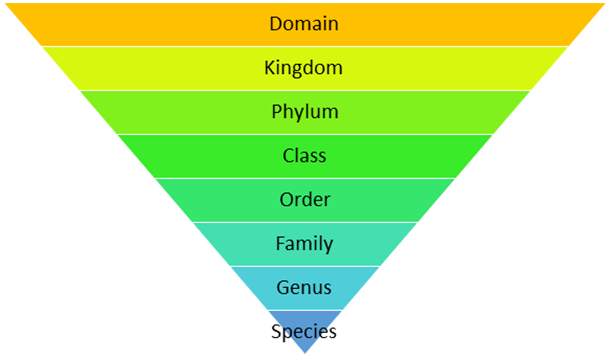

Diversity in the Living World
Diversity in the living world
The biological variety and variability of life on Earth are referred to as biodiversity. Looking around, one will see a wide range of living organisms, including potted plants, insects, birds, pets, and other animals and plants. Other species are invisible to the naked sight but are all around us. A species is represented by each different type of plant, animal, or organism you see. Between 1.7 and 1.8 million species have been identified and described. This refers to the diversity of species on the planet or the quantity and varieties of creatures that exist.
There are millions of plants and animals throughout the world that are known by their regional names. These regional names might differ from one location to the next, even within a country. When referring to organisms, such names can cause confusion. As confuse necessary to standardize the naming of living entities so that they are known by the same name all over the world. This is referred to as nomenclature.
This naming or nomenclature is only achievable if the organism is correctly characterized and we know to which organism the term refers. This is calledidentification.
Scientists have developed processes to assign a scientific name to each known organism in ordering the process. Scientific names for plants are determined by agreed-upon principles and criteria outlined in the International Code for Botanical Nomenclature (ICBN). Taxonomists have developed the International Code of Zoological Nomenclature (ICZN) for animals. Each creature has just one name thanks to the scientific names. Any organism's description should allow anyone (from all over the world) to come up with the same name. They also check to see if the name has been used for any other organism.
To give known creatures scientific names, biologists use broadly accepted rules. Each name is made up of two parts: a generic name and a specific epithet. Binomial nomenclature is a system for naming organismsconsisting of two parts. Carolus Linnaeus devised a naming system that is used by biologists all around the world. He is also known as the Father of Taxomy. This two-name approach was proven to be convenient.Mangiferaindica is the scientific name for the mango where, Mangifera denotes the genus, while indica denotes a specific species or epithet. The following are the universal rules of nomenclature:
1. Biological names are usually written in italics and written in Latin. Regardless of their origin, they are Latinized or derived from Latin.
2. In a biological name, the first component identifies the genus, whereas the second component denotes the specific epithet.
3. In handwriting, both words in a biological name are underlined or typed in italics to reflect their Latin origin.
4. The genus name begins with a capital letter, but the particular epithet begins with a tiny letter.
The author's name occurs after the specific epithet, i.e., the after the zoological name, and is shortened, e.g., Mangiferaindica Linn. It denotes that Linnaeus was the first to describe this species.
Classification is the procedure of grouping things into useful categories based on plainly observable characteristics. Plants and animals, as well as dogs, cats, and insects, are easily identifiable. These phrases link certain characteristics to the organisms in that group. When we talk about mammals,' we're talking about animals with external ears and body hair. As a result, terminology like "Dogs," "Cats," "Mammals," "Wheat," "Rice," "Plants," and "Animals," among others, are useful categories for studying creatures. Taxa is the scientific word for these classifications. A taxon can denote a variety of categories at various levels. Plants are classified as a taxon. 'Wheat' is a taxon as well. 'Animals,' 'Mammals,' and 'Dogs,' for example, are all taxa. As a result, the terms 'animals,"mammals,' and 'dogs' all refer to taxa at various levels.
As a result, all living species can be divided into different taxa based on their properties. Taxonomy is the term for this classifying procedure. The external and internal structure of organisms, as well as cell structure, development process, and ecological information, are essential and form the basis of modern taxonomic investigations. As a result, the fundamental stages of taxonomy are characterization, identification, categorization, and nomenclature. Humans, fora long, have been learning more about different types of organisms, particularly concerning their own Hence, the early classifications were based on the diverse utilities of organisms.
Humans have long been fascinated not only by diverse types of species and their diversity but also by the links that exist between them. The term "systematics" was coined to describe this field of study. The name "systematics" comes from the Latin word "systema," which means "an orderly arrangement of organisms." The title of Linnaeus' publication was SystemaNaturae. Identification, naming, and classification was later added to the scope of systematics. Systematics is the study of organisms' evolutionary relationships.
Taxonomic Categories
Taxonomic Categories
Classification is not a one-step procedure, but rather a series of stages, each representing a rank or category. The category is called a taxonomic category because it is a part of the larger taxonomic arrangement, and all categories combined make up the taxonomic hierarchy. Each category, also known as a classification unit, indicates a rank and is frequently referred to as a taxon (plural taxa). A taxonomic category is a category that is part of a taxonomic arrangement, and all categories combined make up the taxonomic hierarchy. Thus, organisms are divided into kingdoms, phyla or divisions, classes, orders, families, genera, and species.
Insects are a group of organisms with three pairs of jointed legs and other characteristics in common. It indicates that insects are recognizable concrete objects that can be categorized and so have a rank or category assigned to them. The categories are represented by groups of people. Rank is also indicated by category. Each rank, or taxon, is a classification unit. These taxonomic groups/categories are biological entities in their own right, not just morphological aggregations.
The establishment of common categories such as kingdom, phylum or division (for plants), class, order, family, genus, and species have resulted from taxonomic investigations of all known organisms. Species is the lowest level of classification for all organisms, including those in the plant and animal kingdoms. The knowledge of characteristics of an individual or group of organisms is required to categorize an organism into distinct categories. This aids in the identification of similarities and differences between individuals of the same species as well as individuals of different species.
Let us take a detailed look at different taxonomic categories:
(A)Species: A species is a group of individual beings that share fundamental characteristics. Based on morphological features, one species is separated from other closely related species. Mangiferaindica, Solanum tuberosum (potato), and Pantheraleo are just a few examples (lion). The first three words, Mangifera, Solanum, and Panthera, are genera and denote a higher level of taxon or category, while the first three words, indica, tuberosum, and leo, are specific epithets. Each genus may have one or more specific epithets that refer to various creatures that share morphological characteristics. Panthera, for example, has the specific epithet tigris, and Solanum comprises species such as nigrum and melongena. Humans are members of the species sapiens, which is part of the genus Homo.As a result, the scientific designation for a human being is Homo sapiens. Species is regarded as the least inclusive and highly specific category of the taxonomic hierarchy.
(B) Genus: A genus is a collection of related species that share more characteristics than those from other genera. Genera can be defined as groups of closely related species. Potato and brinjal, for example, are two separate species that both belong to the Solanum genus. Panthera species include the lion (Pantheraleo), leopard (Pantherapardus), and tiger (Pantheratigris), all of which share several characteristics. This genus is distinct from the Felis genus, which includes cats.
(C) Family:In comparison to genus and species, a family consists of a set of related genera with fewer similarities. In plants, vegetative and reproductive characteristics are used to classify them into families. Solanum, Petunia, and Datura are three separate genera of plants that belong to the Solanaceae family. The genus Panthera, which includes the lion, tiger, and leopard, is placed in the family Felidae with the genus Felis (cats). Similarly, if you compare and contrast the characteristics of a cat and a dog, you would notice some parallels and variances. Felidae and Canidae are the two different families that they belong to.
(D) Order:Species, genus, and family are all based on a set of comparable characteristics. The aggregates of characters are used to identify the order and other higher taxonomic groups. The group of families that have a few similar characteristics is called order, which is a higher category. When compared to the different genera in a family, there are fewer comparable characters. Plant groups such as Convolvulaceae and Solanaceae are classified as Polymoniales based on their floral characteristics. Carnivora is an animal order that includes families like Felidae and Canidae.
(E) Class: A class is a taxonomic rank (a taxon) that contains species with similar characteristics; it is further divided into one or more orders. A class is a major taxonomic rank below the phylum (or division) and above the order in the biological categorization of life. This category includes orders that are related. Order Primata, which includes monkeys, gorillas, and gibbons, is placed in class Mammalia alongside order Carnivora, which includes tigers, cats, and dogs. Other orders also exist in the Mammalia class.
(F) Phylum/Division:A phylum is a classification or taxonomic rank that falls between kingdom and class. The Phylum is the next higher classification, which includes animals such as fish, amphibians, reptiles, birds, and mammals. All of these are classified as members of the phylum Chordata because they share characteristics such as the presence of a notochord and a dorsal hollow neural system. Classes with a few comparable features in plants are given to a higher category called Division.
In biological classification, the division is a taxonomic rank that is employed differently in zoology and botany. The division is a level similar to a phylum in botany and mycology. The term division is used in zoology to refer to an optional rank that is subordinate to the infraclass and superordinate to the cohort.
(G) Kingdom:In the classification system of animals, all animals belonging to distinct phyla are placed in the top category, Kingdom Animalia. The Kingdom Plantae, on the other hand, is unique in that it includes all plants of diverse divisions. These two groups are today referred to as the animal and plant kingdoms.
(H) Domain:A domain is the largest of all groupings in the classification of life in biology. At this level, the Archaea domain, Bacteria domain, and Eukarya domain are the three agreed-upon categories. The domain is considered to be the most inclusive category of the hierarchy.
The amount of shared features decreases as we progress from species to kingdom. The lower the taxon, the more features the members of the taxon share. The more difficult it is to determine a taxon's relationship to other taxa at the same level, the higher the category. As a result, the classification problem gets more complicated. Therefore, the taxonomists have also created sub-categories in the hierarchy to make the placement of distinct taxa more sound and scientific.
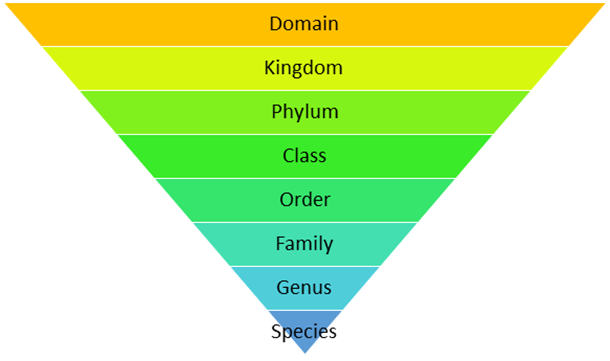

Taxonomical Aids
Taxonomic Aids
Taxonomic studies of various plant, animal, and other organism species are useful in agriculture, forestry, and industry, and they aid in our understanding of biodiversity. These studies necessitate accurate organism taxonomy and identification. Identifying organisms necessitates extensive laboratory and field research. Taxonomic aids are collections of samples or preserved species that aid in the extended investigation for taxonomic hierarchy identification. The primary source of taxonomic studies is the collection of genuine specimens of plant and animal species. These are also necessary for systematics training and are crucial to studies. It's used to classify organisms, and the data acquired is saved alongside the specimens. In some situations, the specimen is saved for further research. Some popular taxonomic aids are discussed below
(I) Herbarium: A herbarium is a reference collection of properly selected and dried plants that are connected to standard-sized paper sheets and filed systematically so that they can be quickly found for study. It's a repository for plant specimens that have been collected, dried, pressed, and preserved on sheets. These sheets are organized according to a widely accepted classification scheme. These specimens, coupled with their descriptions on herbarium sheets, form a repository or storehouse for future use. A label on the herbarium sheets provides information such as the date and location of collection, English, local, and botanical names, family, and collector's name, among other things. In taxonomic investigations, herbaria also function as rapid referral systems.
The Museum of Natural History in Paris, The Royal Botanic Gardens in Kew, England, The New York Botanical Garden, and The Komarov Botanical Institute in St. Petersburg, Russia, have some of the world's largest herbaria, each having 7 to 9.5 million specimens.
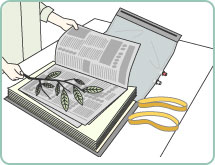


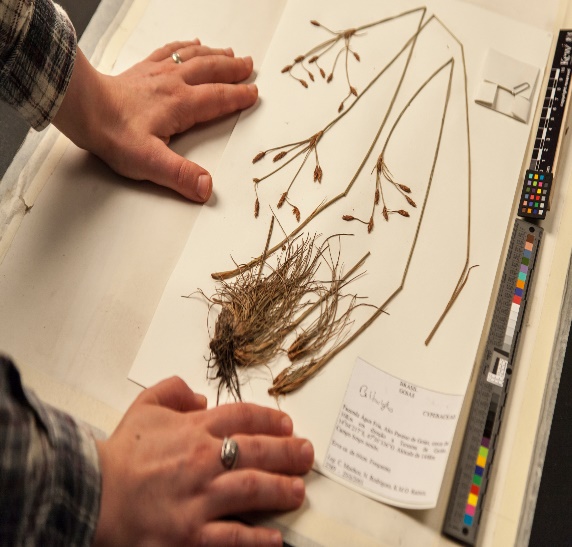
Figure 3: Different stages of herbarium preparation.
(II) Botanical Gardens:
For reference, these specialty gardens have collections of living plants. Plant species are planted in these gardens for identification, and each plant is labeled with its botanical/scientific name as well as its family. Botanical gardens commit their resources to plant research and conservation, as well as public awareness of the world's plant diversity. Royal Botanical Garden, Kew (England), Indian Botanical Garden, Howrah (India), and National Botanical Research Institute, Lucknow are all well-known botanical gardens.
(III) Museum:
A museum is a building where historical, artistic, or scientific objects are displayed, maintained, or researched. Modern museums are designed to collect, preserve, interpret, and show objects of aesthetic, cultural, or scientific significance for public study and education. Biological museums are most commonly found at educational institutions like schools and colleges. For study and reference, museums have collections of preserved plant and animal specimens. Preservative solutions are used to preserve specimens in containers or jars. Dry specimens of plants and animals can also be preserved. After capturing, killing, and pinning insects, they are kept in insect boxes. Stuffed and preserved larger creatures, such as birds and mammals, are common. Animal skeletons are frequently shown in museums.With 19 museums and galleries, the National Zoological Park, and many examination stations, the Smithsonian is the world's largest exploration and museum complex. The company's headquarters are in Washington, D.C.
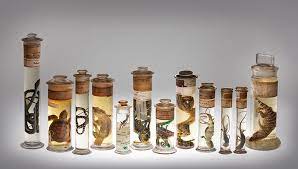
(IV) Zoological Parks:
Zoological parks are protected areas where animals are kept under human supervision and cared for. In zoological parks, many endangered species that are on the verge of extinction are rescued. These are facilities where wild animals are housed in safe conditions under human supervision so that we can learn about their eating habits, behavior, etc. Animals at zoos are kept in settings that are as close to their natural habitats as possible. These parks also contribute to the preservation of the natural balance by increasing the percentage of rainfall. They play a critical role in the conservation of animals. There are a total of 164 zoological parks in India. The Arignar Anna Zoological Park in Chennai is India's largest zoological park covering about 1300 acres with rare species of flora and fauna.
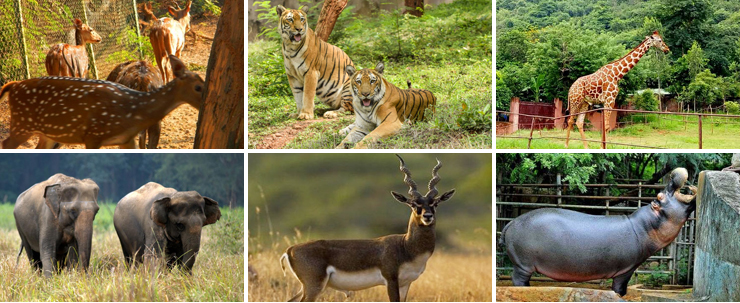
(V) Key:
Keys are used foridentifying and classifying various plants and animals based on their similarities and variances in characteristics. As a result, only one is accepted while the other is rejected. A lead is a name given to each assertion in the key. For identification purposes, separate taxonomic keys are necessary for each taxonomic group such as family, genus, and species. The majority of keys are analytical these are used to distinguish between classes, orders, families, genera, and species. It is split into pairs of characters that are either present or absent.
Other methods of recording descriptions include flora, manuals, monographs, and catalogs. They also assist with proper identification. Flora includes a detailed description of a certain area's habitat and plant distribution. These provide an index to the plant species that can be found in a certain area. A Catalogue is a comprehensive list, pamphlet, or register that contains a collection of traits and their variants found in diverse taxa.Manuals are important for identifying the names of species that can be found in a given area. Monographs are documents that focus on a single taxon.
Kingdom Systems of Classification
Chapter 2
Biological Classification
Biological classification is the practice of categorizing living and extinct organisms into groups based on shared traits. Classifying organisms is necessary because it allows us to better understand biodiversity. It aids in the identification of living entities as well as the comprehension of their diversity. Classification aids in our understanding of different types of plants and animals and their characteristics, similarities, and differences. It allows us to see how complex organisms develop from simpler organisms. Different categories are used to understand and research the characteristics, similarities, and differences among various living species. Classification is the tool that allows us to manage a wide range of living organisms. Understanding the inter-relationships between different groups of organisms is critical. Other biological sciences are built on the foundation of classification.
Kingdom Systems of Classification:
Aristotle was the first to attempt to classify things on a more scientific basis. He classified plants into trees, shrubs, and herbs based on simple physical characteristics. He also separated the animals into two groups: those with red blood and those without. A Two Kingdom system of classification was devised during Linnaeus's time, with Plantae and Animalia kingdoms encompassing all plants and animals, respectively. Eukaryotes and prokaryotes, unicellular and multicellular organisms, photosynthetic (green algae), and non-photosynthetic (fungi) species were all lumped together in this system. Plant and animal classifications were simple to implement and understand, but a huge number of creatures did not fit into either group. As a result, the long-used two-kingdom classification was determined to be inadequate. Aside from gross appearance, there was a need to include other characteristics such as cell structure, wall nature, manner of nourishment, habitat, reproduction strategies, evolutionary linkages, and so on. As a result, classification systems for living organisms have experienced several alterations over time. Though the plant and animal kingdoms have remained consistent throughout all systems, the understanding of which groups/organisms should be included inside these kingdoms has evolved; the number and character of additional kingdoms have also been interpreted differently over time by different scientists.
A Five Kingdom Classification was proposed by R.H. Whittaker in 1969. Monera, Protista, Fungi, Plantae, and Animalia were the kingdoms he defined. Cell structure, body arrangement, manner of nourishment, reproduction, and phylogenetic links are among his key classification criteria. A three-domain approach has also been proposed, which divides Kingdom Monera into two domains and leaves the remaining eukaryotic kingdoms in the third domain, resulting in a six-kingdom categorization.
Let's take a look at this five-kingdom classification to see what concerns and considerations affected the system. Plants included bacteria, blue-green algae, fungi, mosses, ferns, gymnosperms, and angiosperms in previous classification systems. The fact that all of the species in this kingdom had a cell wall in their cells served as a unifying characteristic. This grouped people who had a lot of things in common but also had a lot of things in common. It brought together prokaryotic bacteria and blue-green algae (cyanobacteria), as well as other eukaryotic species. It also combined unicellular and multicellular species together, such as Chlamydomonas and Spirogyra being categorized together under algae.The classification did not distinguish between the heterotrophic fungus and the autotrophic green plants, albeit they did have a distinct difference in the composition of their cell walls, with the fungi having chitin and the green plants having a cellulose cell wall. When these qualities were taken into account, the fungi were given their own kingdom: Kingdom Fungi. Kingdom Monera was created to unite all prokaryotic species together, while Kingdom Protista was created to group all unicellular eukaryotic organisms together. Chlamydomonasand Chlorella (both of which have cell walls and were previously put in Algae within Plants) have been combined with Paramoecium and Amoeba in the kingdom Protista (which were earlier placed in the animal kingdom which lack cell walls). It has brought together organisms that were previously classified into various kingdoms.
Kingdom: Monera
Kingdom Monera
Monera is a biological kingdom that is solely made up of prokaryotes. Their DNA is not enclosed within the nucleus as these single-celled organisms lack a true nucleus. The Monerans also do not possess any membrane-bound organelles.
The Kingdom Monera is made up entirely of bacteria. They are the most common microorganisms on the planet. Bacteria can be found practically anywhere. A handful of soil contains hundreds of bacteria. They also exist in harsh environments like hot springs, deserts, snow, and deep oceans, where only a few other species can survive. As parasites, many of them live in or on other organisms.
The spherical Coccus (pl.: cocci), the rod-shaped Bacillus (pl.: bacilli), the comma-shaped Vibrium (pl.: vibrio), and the spiral Spirillum are the four types of bacteria classified by their shape.
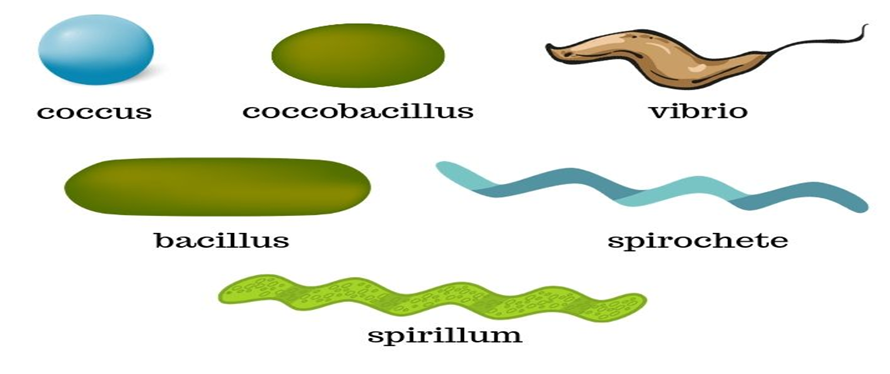
Although bacteria have a simple structure, their activity is extremely sophisticated. Bacteria, in comparison to many other creatures, have the greatest metabolic diversity.Some bacteria are autotrophic, meaning they produce their own nourishment from inorganic sources. They can be either photosynthetic or chemosynthetic autotrophs. The great majority of bacteria are heterotrophs, meaning they feed on dead organic matter or other species. Archaebacteria, Eubacteria, and Cyanobacteria are the three sub-kingdoms of the kingdom Monera.
A. Archaebacteria:
These bacteria are unique in that they survive in extremely salty environments (halophiles), hot springs (thermoacidophiles), and marshy environments (methanogens). Archaebacteria vary from other bacteria in that they have a unique cell wall construction that allows them to survive in harsh environments. Methanogens are bacteria that live in the guts of ruminant animals like cows and buffaloes and are responsible for the creation of methane (biogas) from their feces.
B. Eubacteria:
"True bacteria" is another name for Eubacteria. The existence of a hard cell wall and, if motile, a flagellum distinguishes them. A few bacteria have pili, which are small appendages on the cell surface that aid the bacterium in sexual reproduction. Pili also aids in the attachment of pathogens to their hosts. Depending on the type of the cell wall and the stain they take, they are classified as gram-positive or gram-negative.
C. Cyanobacteria:
Cyanobacteria are photosynthetic autotrophs with chlorophyll similar to green plants. They are unicellular, colonial, or filamentous algae that can be found in freshwater, marine, or terrestrial environments. Gelatinous sheath surrounds the colonies in general. Blooms are common in contaminated water bodies. Some of these species, such as Nostoc and Anabaena, can fix atmospheric nitrogen in specialized cells called heterocysts. Chemosynthetic autotrophic bacteria utilize the energy released by oxidizing inorganic compounds like nitrates, nitrites, and ammonia to produce ATP. They are vital in the recycling of nutrients such as nitrogen, phosphorus, iron, and sulfur.
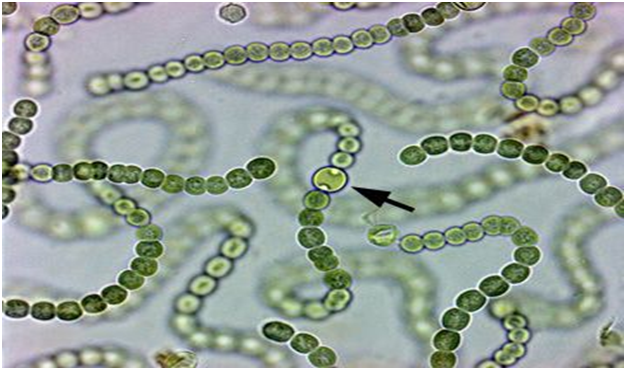
In nature, heterotrophic bacteria are the most common. The majority of them are significant decomposers. Many of them have a major influence on human affairs.They aid in the creation of curd from milk, the manufacture of antibiotics, and the fixation of nitrogen in legume roots, among other things. Some of these are infections that harm humans, crops, farm animals, and pets. Bacterial infections such as cholera, typhoid, tetanus, and citrus canker are well-known. Bacteria mostly reproduce through fission. They may generate spores in unfavorable conditions. They also reproduce by adopting a rudimentary method of DNA transfer from one bacteria to the next, which is similar to sexual reproduction.
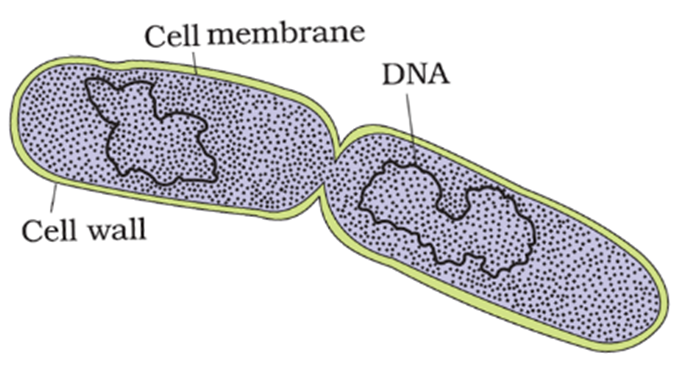
Mycoplasma are creatures that lack a cell wall entirely. They are the world's tiniest living cells, capable of surviving without oxygen. In animals and plants, many mycoplasmas are pathogenic.
Kingdom: Protista
Kingdom Protista
Kingdom Protista is a diverse group of organisms. It includes all eukaryotes that aren't animals, plants, or fungi, including single-celled and multicellular creatures. There are an estimated 60,000 to 200,000 protist species, with many more yet to be discovered. Apart from a relatively simple organization, the eukaryotes that make up this kingdom have little in common. Some protists are small and unicellular, like an amoeba, while others, like seaweed, are enormous and multicellular. Multicellular protists, on the other hand, lack highly specialized tissues and organs. Protists are distinguished from other eukaryotes, such as fungi, mammals, and plants, by their basic cellular arrangement. Protista is largely an aquatic phylum. This kingdom is linked to the kingdoms of plants, animals, and fungus.
The Protista cell body, like other eukaryotes, has a well-defined nucleus and other membrane-bound organelles. Some have flagella or cilia, while others don't. Cell fusion and zygote development are used by protists to reproduce both asexually and sexually. Many protists, such as algae, are photosynthetic and play an important role in ecosystems as primary producers. Other protists cause a variety of deadly human diseases, including malaria and sleeping sickness.Chrysophytes, Dinoflagellates, Euglenoids, Slime molds, andProtozoans come under Protista.
A. Chrysophytes:
Diatoms and golden algae (desmids) are members of this category. They can be found in both freshwater and marine habitats. They are tiny and float on water currents passively (plankton). They are mostly photosynthetic. The cell walls of diatoms produce two thin overlapping shells that fit together like a soapbox. Because the walls are embedded with silica, they are unbreakable. As a result, diatoms have left behind a vast amount of cell wall deposits in their habitat, which has been referred to as 'diatomaceous earth' over billions of years. Because this soil is rough, it is utilized for polishing and filtration of oils and syrups. In the oceans, diatoms are the primary 'producers.'
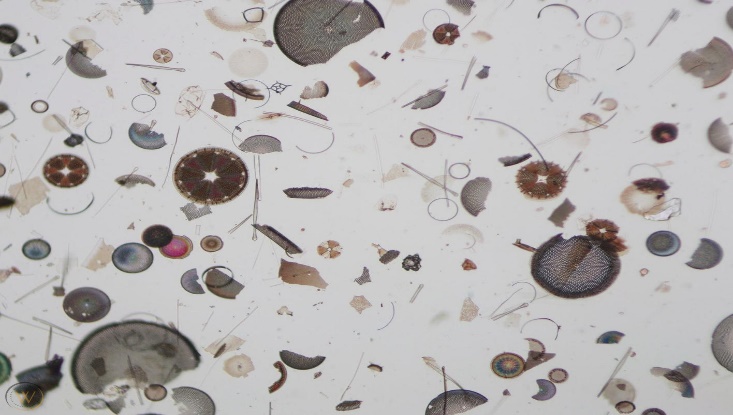
B. Dinoflagellates:
These organisms are mostly marine and photosynthetic.They appear yellow, green, brown, blue, or red dependingon the main pigments present in their cells. The cell wallhas stiff cellulose plates on the outer surface. Most ofthem have two flagella; one lies longitudinally and theother transversely in a furrow between the wall plates.Very often, red dinoflagellates (Example: Gonyaulax)undergo such rapid multiplication that they make thesea appear red (red tides). Toxins released in such largenumbers may even kill other marine animals such as fish.

C. Euglenoids:
The majority of them are freshwater organisms found in stagnant water. Instead of a cell wall, they have a protein-rich layer called pellicle which makes their body flexible.They have two flagella, a short and a long one. Thoughthey are photosynthetic in the presence of sunlight, whendeprived of sunlight they behave like heterotrophs bypredating on other smaller organisms. Interestingly, thepigments of Euglenoids are identical to those present in higher plants. Example: Euglena.
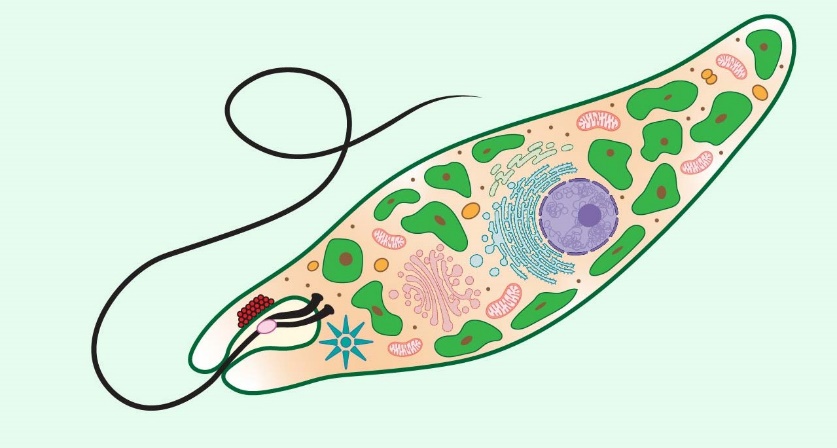
D. Slime Molds:
Slime molds are protists that feed on their surroundings. The organism eats organic matter as it glides along with rotting twigs and leaves. They create a plasmodium, which can grow and spread over severalfeet if the conditions are right. The plasmodium develops and generates fruiting bodies with spores at their tips in unfavorable conditions. True walls exist within the spores. They are highly hardy and may live for many years in harsh environments. Air currents disseminate the spores.
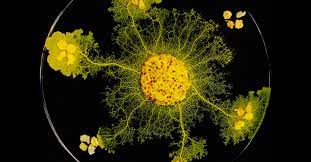
E.Protozoans:
They are all heterotrophic organisms that exist as predators or parasites. Animal relatives are thought to be their ancestors. Protozoans are divided into four categories.
1. Amoeboid protozoans dwell in freshwater, seawater, or moist soil. As in Amoeba, they move and seize their prey by putting out pseudopodia (false feet). Silica shells cover the surface of marine organisms. Some of them are parasites, such as Entamoeba.
2. Flagellated protozoans: This group includes both free-living and parasitic protozoans. They have flagella on their bodies. Sleeping sickness is caused by a flagellated parasitic protozoan. Trypanosoma is a good example.
3. Ciliated protozoans: Ciliated protozoans are aquatic, actively moving organisms with thousands of cilia. They have a cavity (gullet) on the cell surface that opens to the outside. The water-containing food is directed towards the gullet by the coordinated movement of rows of cilia. Paramoecium is a good example.
4. Sporozoans: This term refers to a group of organisms that have a spore-like stage in their life cycle. Plasmodium (malarial parasite), which causes malaria, is the most well-known. Malaria is a disease that has a devastating impact on the human population
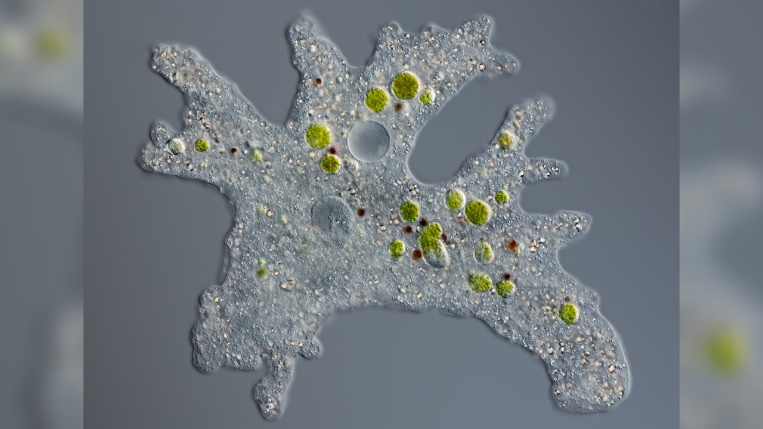
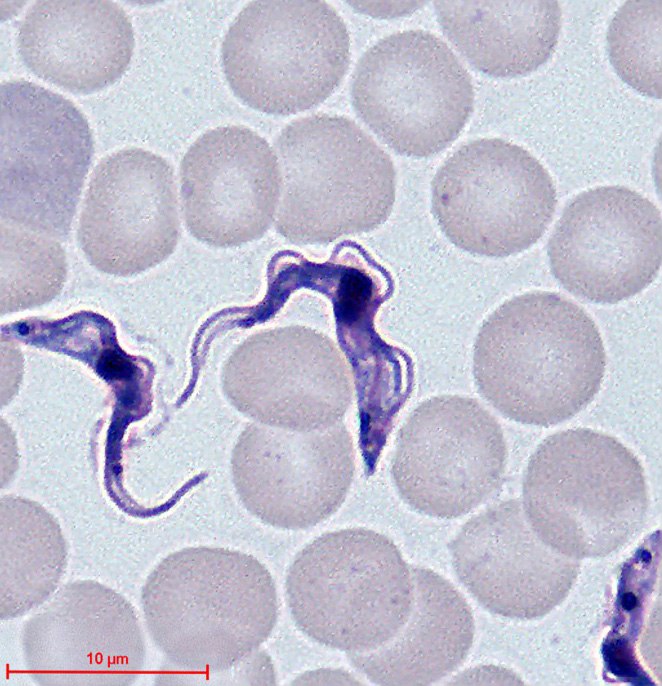
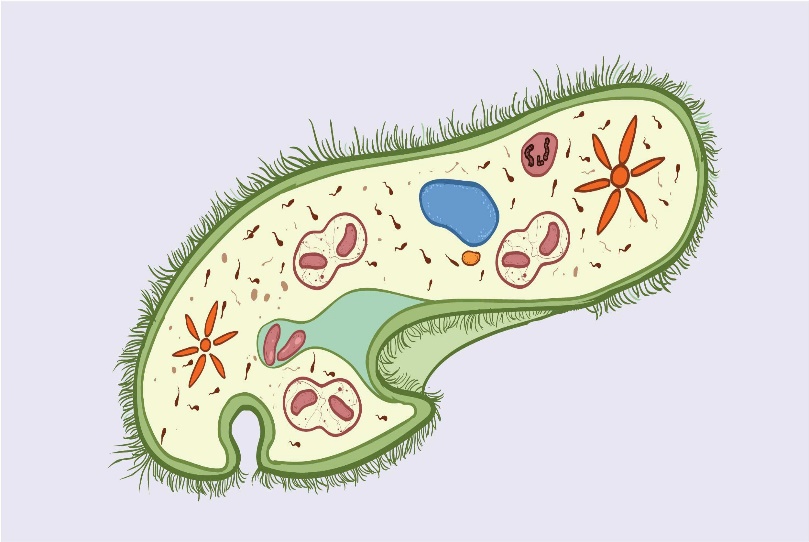
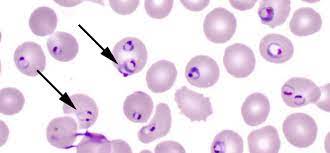
Figure 8 (a) Ameoba (b) Trypanosoma (c) Paramecium (d) Plasmodium
Kingdom: Fungi
Kingdom Fungi
Fungi are eukaryotic organisms that include yeasts, molds, mushrooms as well as other microbes.Fungi are a distinct kingdom of heterotrophic creatures. They have a wide range of forms and environments. Fungi can often be observed on stale bread and rotten fruits. Toadstools and the common mushroom that we eat are both fungi. A parasitic fungus causes white patches on mustard leaves. Some unicellular fungi, such as yeast, are utilized in the production of bread and beer. Other fungi produce illnesses in plants and animals; Puccinia, which causes wheat rust, is a good example. Penicillium, for example, is a source of antibiotics. Fungi are widely distributed and can be found in the air, water, soil, and on animals and plants. They thrive in warm, humid environments.Mycology is the branch of biology concerned with the study of fungi.
Fungi are filamentous, with the exception of yeasts, which are unicellular. Their bodies are made up of hyphae, which are long, slender thread-like structures. Mycelium refers to the network of hyphae. Coenocytic hyphae are hyphae that are continuous tubes filled with multinucleated cytoplasm. In the hyphae of others, there are septae or cross walls. Fungi's cell walls are made up of chitin and carbohydrates.
Saprophytes are fungi that are heterotrophic and absorb soluble organic materials from dead substrates. Parasites are organisms that rely on live plants and animals for their survival. They can also live as symbionts, forming lichens with algae and mycorrhiza with the roots of higher plants.
Fungi reproduce via vegetative processes such as fragmentation, fission, and budding. Spores known as conidia, sporangiospores, and zoospores are instrumental in asexual reproduction, while oospores, ascospores, and basidiospores are responsible for sexual reproduction. Fruiting bodies are structures that produce different types of spores.
The three phases of the sexual cycle are as follows:
(i) Plasmogamy, which is the fusion of protoplasms between two motile or non-motile gametes.
(ii) Karyogamy, which is the fusion of two nuclei.
(iii) In a zygote, meiosis results in haploid spores.
Two haploid hyphae of compatible mating types come together and merge when a fungus reproduces sexually. In some fungi, the fusing of two haploid cells results in the formation of diploid cells right away (2n).
Kingdom fungi can be divided into three groups based on their nutritional needs.
(i)Saprophytic fungus get their sustenance from dead organic matter. Rhizopus, Penicillium, and Aspergillus are other examples.
(ii)Parasitic fungus get their food by living on other living organisms (plants or animals) and absorbing nutrients from them. Taphrina and Puccinia are two examples.
(iii)Symbiotic fungi are those that exist in an interdependent relationship with other species in which both parties benefit. Lichens and mycorrhizae are two examples. Lichens are the result of a symbiotic relationship between algae and fungi. Algae and fungi benefit from each other in this situation because fungi give protection to algae and algae provide carbohydrates for fungi.
The morphology of the mycelium, mode of sporeformation, and fruiting bodies form the basis for thedivision of the kingdom into various classes which are discussed below.
(a) Phycomycetes:
Phycomycetes can be found in aquatic areas and on decaying wood in moist and humid environments, as well as obligatory parasites on plants. Algal fungi are sometimes known as Phycomycetes. They have aseptate coenocytic hyphae that are distinctive. Asexual reproduction occurs via zoospores (motile) or aplanospores (asexual) (non-motile). In the sporangium, these spores are produced endogenously. A zygospore is created when two gametes fuse together. The morphology of these gametes is either similar (isogamous) or distinct (heterogamous) (anisogamous or oogamous). Mucor, Rhizopus (the bread mold), and Albugo(the parasitic fungi on mustard) are other typical examples.
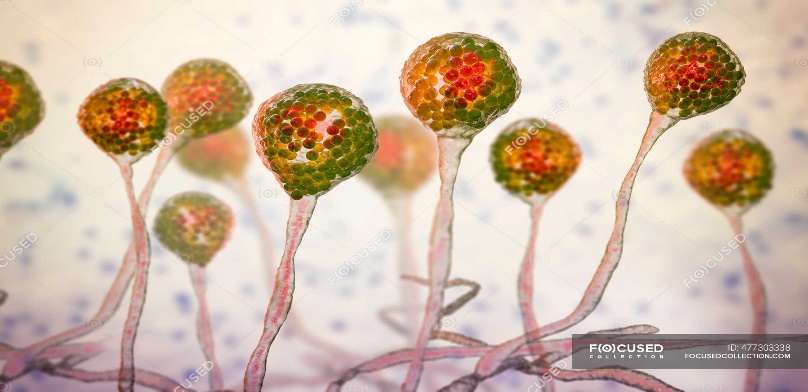
(b) Ascomycetes:
The ascomycetes, sometimes known as sac-fungi, are typically multicellular (e.g., Penicillium) or occasionally unicellular (e.g. Saccharomyces or yeast). These fungi may be Saprophytic, decomposers, parasitic, or coprophilous(growing on dung). Mycelium is septate and branched. Conidia grown exogenously on special mycelium termed conidiophores are the asexual spores. Conidia create mycelium when they germinate. Ascospores are sexual spores that are produced endogenously in sacs similar to asci (singular ascus). These asci are grouped in ascocarps, which are distinct types of fruiting structures. Aspergillus, Claviceps, and Neurospora are some examples. Neurospora is widely utilized in biochemical and genetic research. Many of the members, such as morels and truffles, are edible and regarded as delicacies.
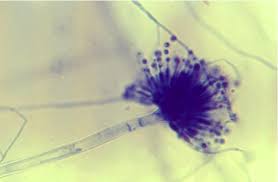
(c) Basidiomycetes:
Mushrooms, bracket fungi, and puffballs are examples of basidiomycetes. They can be found growing in soil, on logs and tree stumps, and in living things. Rusts and smuts, for example, are parasitic plant bodies. The mycelium is septate and branching. Although asexual spores are rare, vegetative reproduction by fragmentation is prevalent. Although there are no sex organs, plasmogamy is caused by the fusing of two vegetative or somatic cells of different strains or genotypes. The dikaryotic complex that results eventually gives rise to basidium. The basidium undergoes karyogamy and meiosis, resulting in four basidiospores. The basidiospores are formed exogenously on the basidium (pl.: basidia). Basidia are arranged in basidiocarps, which are fruiting bodies. Agaricus (mushroom), Ustilago (smut), and Puccinia are some of the most prevalent members.
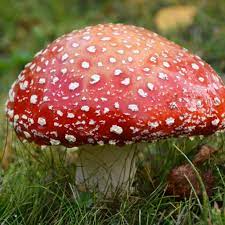
(d) Deuteromycetes:
In this category, only asexual or vegetative phases of these fungi are known, therefore they are commonly referred to as imperfect fungi. When the sexual forms of these fungi were discovered, they were placed in the appropriate groups. It's also likely that the asexual and vegetative stages were given one name (and were classified as Deuteromycetes), while the sexual stage was given another one (and placed under another class). The fungi were accurately recognized and moved out of Deuteromycetes after the links were discovered. Deuteromycetes were frequently shifted to ascomycetes and basidiomycetes after their perfect (sexual) stages were discovered. Conidia are asexual spores that Deuteromycetes use to reproduce. The mycelium is branching and septate.Some individuals are saprophytes or parasites, whereas the majority are litter decomposers who aid in mineral cycling. Alternaria, Colletotrichum, and Trichoderma are other examples.
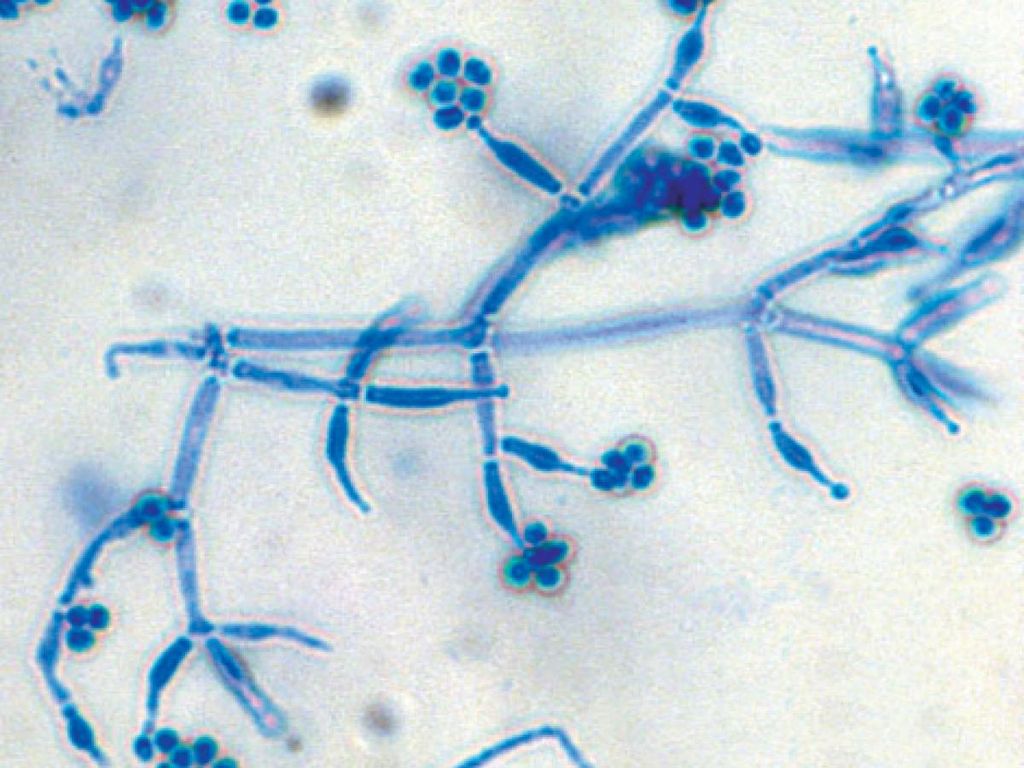
Kingdom: Plantae
Kingdom Plantae
Kingdom Plantae refers to any eukaryotic chlorophyll-containing organism that is typically referred to as a plant. Plant cells are eukaryotic in nature, with significant chloroplasts and a cellulose-based cell wall. Algae, bryophytes, Pteridophytes, gymnosperms, and angiosperms are all members of the Plantae family. A few members, such as insectivorous plants and parasites, are partially heterotrophic.
Insectivorous plants include bladderwort and Venus flytrap, while Cuscutaexists like a parasite.
Plants have two unique phases in their life cycle: diploid sporophytic and haploid gametophytic, which alternate. The lengths of the haploid and diploid phases, as well as whether they are free-living or dependent on others, varied between plant families. Alternation of generation is the term for this phenomenon.
Plants are classified according to the following criteria:
1. Plant body: Whether or not a well-differentiated plant body exists. Root, stem, and leaves, for example.
2. Vascular system: The presence or absence of a vascular system for water and other material movements. Phloem and Xylem, are two types of vascular tissues in plants.
3. The presence or absence of flowers and seeds, as well as whether the seeds are bare or wrapped in fruit, are all factors in seed production.
According to the above-mentioned criteria, the plant kingdom has been divided into five subgroups:
(A) Thallophyta:
Thallophytes have a thallus-like body structure and lack a well-differentiated body structure. Plants having a primitive and simple body structure are included. The thallus is the plant's main body, and it can be filamentous, colonial, branching, or unbranched. Algae such as green algae, red algae, and brown algae are examples. Volvox, Fucus, Spirogyra, Chara, Polysiphonia, Ulothrix, and other species are common examples.
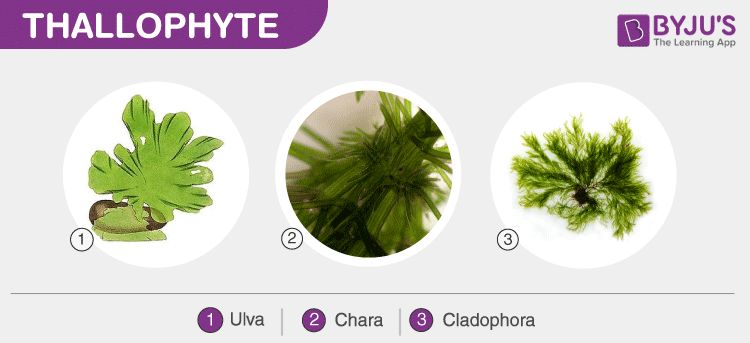
(B) Bryophytes
Bryophytes are plants that lack vascular tissues. Root-like, stem-like, and leaf-like components make up the plant's body. Bryophytes are terrestrial plants that are also known as "plant amphibians" since they require water for sexual reproduction. They thrive in wet, shaded environments. Mosses, hornworts, and liverworts are all members of the Bryophyta family. Marchantia, Funaria, Sphagnum, Antheoceros, etc. are well-known examples.
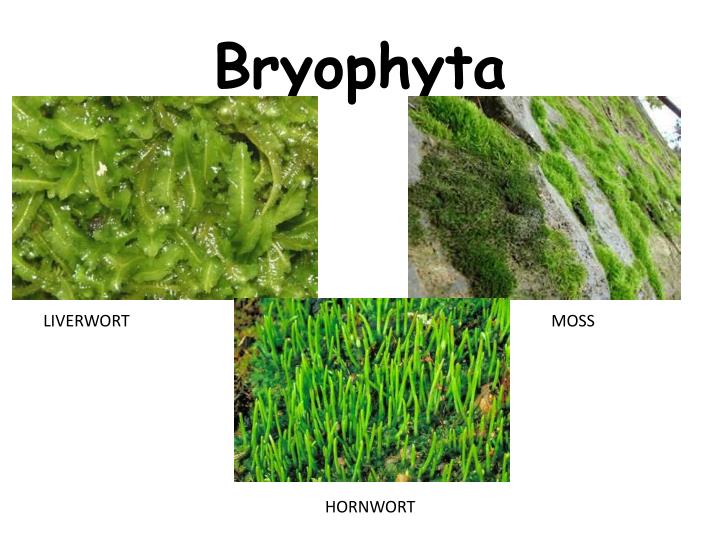
(C) Pteridophyta:
Pteridophytes have a plant body that is well-differentiated into roots, stems, and leaves. They have a circulatory system that allows water and other chemicals to be transported. Selaginella, Equisetum, Pteris, and other common examples are only a few.
Non-flowering and non-seed bearing plants. E.g. Thallophyta, Bryophyta, Pteridophyta are collectively known as Cryptogams.
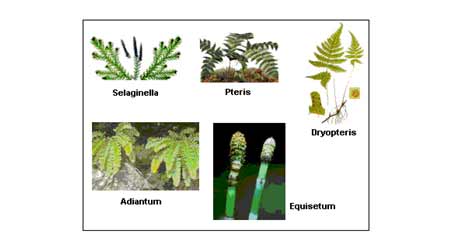
(D) Gymnosperms:
Gymnosperms have a plant body and vascular tissues that are well-differentiated. They produce naked seeds, which are seeds that are not encased in a fruit. Gymnosperms include plants such as Cycas, Pinus, Ephedra, and others.
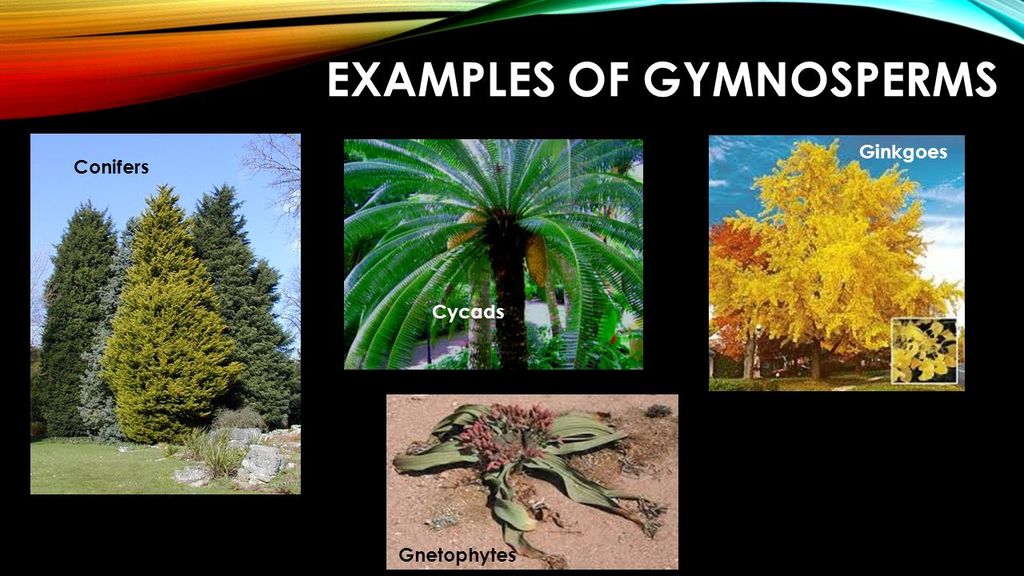
(E) Angiosperms:
Seed-bearing vascular plants with a well-differentiated plant body are known as angiosperms. Angiosperm seeds are contained within the fruits. Angiosperms are found all over the world and range in size from 0.1 cm to 100 m. For example, Wolffia is a little plant that grows to be around 0.1 cm tall, while Eucalyptus trees grow to be over 100 m tall. According to the number of cotyledons contained in the seeds, angiosperms are further split into monocotyledons and dicotyledons. Mango, rose, tomato, onion, wheat, maize, and other common examples are only a few.
Flowering and seed-bearing plants. E.g. Gymnosperms, Angiosperms are known as Phanerogams.
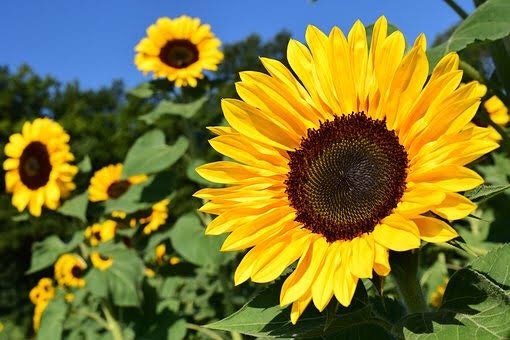
Kingdom: Animalia
Kingdom Animalia
Multicellular eukaryotic organisms characterize this kingdom. Animals rely on plants for food, either directly or indirectly. Food is digested in an interior cavity, and food reserves are stored as glycogen or fat. Their feeding mode is heterotrophic and holozoic. They have a distinct growth pattern and mature into adults with distinct shapes and sizes. Higher forms have more complex sensory and motor mechanisms. The majority of them can move around. Male and female copulation is followed by embryological development in sexual reproduction. The animal kingdom is the most populous of the five kingdoms. They do not, however, have chlorophyll or a cell wall, as do plants.
Kingdom Animalia is divided into ten subphyla depending on body design or differentiation. These phyla are as follows:
(A) Phylum Porifera:
It is a phylum of organisms that have holes or perforations. Commonly known as Sponges. Poriferans are multicellular organisms with a hard outer skeleton that is non-motile. Their bodies have pores that form a canal system that aids in the passage of chemicals. They lack a well-developed organ or organ system and are not distinguished between head and tail. They primarily live in a marine environment. Spongilla and Sycon are examples of the Porifera phylum.
(B) Phylum Coelenterata (Cnidaria):
Hollow-bellied organisms are included in coelenterates. The presence of a hollow bodily cavity is one of the distinguishing characteristics of this group. The body is made up of two layers of cells: interior and exterior linings, which are differentiated into two ends. All aquatic animals are included in this phyla. Members of this phylum dwell in both colonies (corals) and solitary environments (Sea anemones). Hydra and jellyfish are examples of the phylum Coelenterata.
(C) Phylum Platyhelminthes:
Flatworms are the popular name for Platyhelminthes. Their body shape is complicated, dorsoventrally flattened, and distinct. Tissues are triploblastic and differentiated from three layers of cells. There is no actual interior cavity or coelom in them. They are symmetrical on both sides and can be free-living (Planaria) or parasitic (liver flukes). Tapeworm and Planaria are examples of Platyhelminthes phylum.
(D) Phylum Nematoda:
Nematodes, sometimes known as roundworms, belong to the Phylum Nematoda. The body of a nematode is cylindrical. They are triploblastic and bilaterally symmetrical. They have a fake bodily cavity called pseudocoelom. Elephantiasis and ascariasis are parasitic diseases caused by them. Ascaris and Wuchereria are examples of the phylum Nematoda.
(E) Phylum Annelida:
Annelids, are often known as segmented or ringed worms. They possess a head and tail that are separated by a segmented cylindrical body. The body is symmetrical on both sides and is triploblastic. They have a true cavity in their bodies. Their habitat includes both marine and freshwater environments, as well as land. Earthworms and Leeches are examples of the phylum Annelida.
(F) Phylum Arthropoda:
The term "arthropod" refers to a creature with jointed legs. This phylum includes animals with jointed appendages. This is the animal kingdom's largest phylum. They have jointed legs, an exoskeleton, and a segmented body that is bilaterally symmetrical. Organs and organ systems are well-differentiated. They have an open circulatory system, but no distinct blood vessels. Spiders, butterflies, and mosquitoes are all members of the Arthropoda phylum.
(G) Phylum Mollusca:
Molluscs are a wide group of animals that belong to the Phylum Mollusca. They are triploblastic and bilaterally symmetrical. The body is less segmented, yet organs and organ systems are well-developed. Mollusks typically have an open circulatory system. There are limbs present. Snails and octopuses are examples of the Mollusca phylum.
(H) Phylum Echinodermata:
Echinoderms are animals with spiky skin. They are triploblastic and have radial symmetry. They are true coelomates. The skeletal structure is made up of calcium carbonate and is quite hard. They are aquatic animals that live in the open ocean. Sea urchins and starfish are examples of the phylum Echinodermata.
(I) Phylum Hemichordata:
Hemichordata is a phylum of marine deuterostome organisms that is sometimes referred to as the echinoderms' sister group. The body is soft and delicate, with a proboscis. The epidermis is made up of only one layer. It is made up of worm-like marine invertebrates that are organized into organ systems. They have a circulatory system that is open. Because they are marine, they breathe through their gills. External fertilization is observed, and they have different sexes. Development is a direct process. Hemichordata includes Balanoglossus and Saccoglossus.
(J) Phylum Chordata:
Animals having a flexible cord supporting their dorsal or rear sides belong to the Chordata phylum. The majority of the species in the phylum Chordata are vertebrates or creatures with backbones. They are bilaterally symmetrical, triploblastic, and classified at the organ-system level. They have a nerve cord and a notochord. The circulatory system is one that is closed. Urochordata, Cephalochordata, and Vertebrata are the three subphyla of Chordata. Chordates include pandas, crows, sharks, salamanders, alligators, sea squirts, and many others.
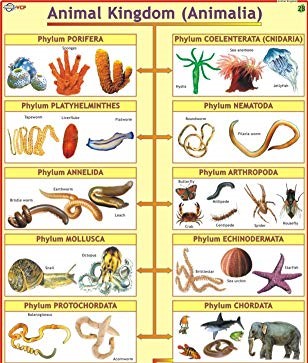
Viruses, viroids, prions and lichens:
Lichens and some acellular species like viruses, viroids, and prions are not included in Whittaker's five kingdom classification system. Here's a quick run-down of what they're all about.
Viruses were not classified since they are not actually 'alive,' as defined by organisms with a cell structure. Viruses are non-cellular organisms with a crystalline structure that is inactive outside of living cells. When they infect a cell, they use the host cell's machinery to duplicate themselves, eventually destroying the host. Viruses are classified as either living or non-living organisms. Dmitri Ivanowsky (1892), who identified specific bacteria as the causal organisms of the mosaic sickness, gave the name virus, which means venom or deadly fluid.Because they passed through bacterium-proof filters, they were discovered to be smaller than bacteria. M.W. Beijerinek (1898) discovered that an extract from sick tobacco plants could infect healthy plants, and he named the fluid Contagium vivum fluidum (infectious living fluid). W.M. Stanley (1935) demonstrated that viruses can crystallize, and that crystals are mostly made up of proteins. Outside of their respective host cell, they are inactive. Viruses are obligate parasites.Viruses include genetic material in the form of RNA or DNA, in addition to proteins. There isn't a single virus that has both RNA and DNA. A virus is a nucleoprotein with infectious genetic material. Plant viruses contain single-stranded RNA, while animal viruses have either single or double-stranded RNA or double-stranded DNA.
Bacterial viruses, also known as bacteriophages (viruses that infect bacteria), are double-stranded DNA viruses that infect bacteria. The nucleic acid is protected by a protein coat called capsid, which is made up of tiny subunits called capsomeres. The geometric forms of these capsomeres are helical or polyhedral. Mumps, smallpox, herpes, and influenza are all diseases caused by viruses. AIDS is also caused by a virus known as HIV in humans.Mosaic formation, leaf rolling and curling, yellowing and vein clearing, dwarfing, and stunted development are some of the symptoms seen in plants.
Viroids: In 1971, T.O. Diener found a novel infectious agent that caused potato spindle tuber disease and was smaller than viruses. It was discovered to be a free RNA that lacked the protein covering that viruses have, therefore the term viroid. The viroid's RNA has a low molecular weight.
Prions: In modern medicine, an agent made up of improperly folded protein has been discovered to spread some infectious brain illnesses. The agent was about the same size as viruses. Prions were the name given to these agents. The most well-known prions disorders are bovine spongiform encephalopathy (BSE), also known as mad cow disease in cattle, and its human counterpart Cr–Jacob disease (CJD).
Lichens are symbiotic (meaning mutually beneficial) interactions between algae and fungi. Phycobiont refers to the algal component, while mycobiont refers to the fungus component. Both are autotrophic and heterotrophic, respectively. Fungi offer refuge and absorb mineral nutrients and water for algae, and algae supply sustenance for fungi. Their relationship is so strong that if you saw a lichen in the wild, you'd never guess it included two different organisms. Lichens are excellent pollutant indicators since they do not develop in polluted environments.
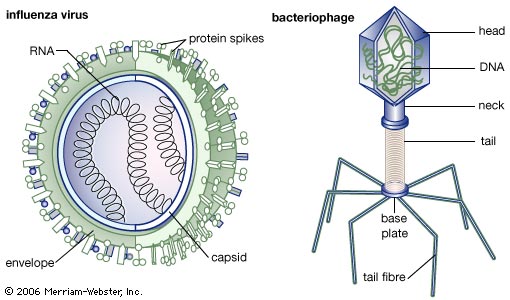
Classification Systems and taxonomy branches
Plant Kingdom
The broad classification of living organisms was proposed by Whittaker in 1969. He suggested a five-kingdomclassification, consisting of Monera, Protista, Fungi, Animalia, and Plantae. In this chapter, we will furtherstudy the classification within Kingdom Plantae or the plant kingdom. Kingdom Plantae is further classified into algae, Bryophytes, Pteridophytes, Gymnosperms, and Angiosperms.
Classification systems and taxonomy branches
Plant taxonomy can be defined as a branch of botanythat dealswith the characterization, identification, classification, and nomenclature of the plants on the basis ofsimilarities and differences.
The purpose of plant taxonomy is:
1. Identification: To identify the unknown species based on its characteristics and compare it with already existing species.
2. Characterization: To provide a description of all the characteristics of the newly identified plant species.
3. Classification: A suitable placement of the known species into different groups according to similarities and differences.
4. Nomenclature: Providing a suitable scientific name to the convention.
Only a few vegetative features were considered in the first classification system. Along with morphological traits, modern taxonomy studies have become more comprehensive and taken into account numerous morphological, cellular, and molecular factors, such as cellular and reproductive aspects, mode of nutrition, habitat, evolutionary relationships, and so on.
Plant classification systems are divided into three categories.
(I) Artificial system of classification: it was the earliest system that tried to classify organisms based on a few superficial characteristics. Ithowever did not consider morphological details and the evolutionary relationship among the organisms. This system gives equal importance to vegetative and sexual characters. Vegetative characters are greatly influenced by their surroundings. Therefore the closely related species could not be properly classified.More than 2000 years ago, Aristotlewas able to classify plants into herbs, shrubs, and trees, solely on the basis of morphology characters. Carl Linnaeus in his book Systema Naturaegives the hierarchical system of classification for the plant kingdom and animal kingdom. He proposed Binomial Nomenclature and the rules for naming every species.
(II) Natural system of classification: In this system, more traits were taken into account, in order to characterize. It was based on the natural similarities of vegetative and floral characteristics among organisms it considers various external and internal features like the anatomy of the plant, cell types of an embryo, and phytochemistry.
Bentham and Hooker’s system of classification categorized plants into cryptogams (non-flowering plants) and Phanerogams(flowering plants). It helped to determine relationships between the various groups of plants and failed to identify the phylogenetic relationship among different groups as it incorrectly placed gymnosperms between monocotyledons and dicotyledons.
(III) The phylogenetic system of classification: This system is based on evolutionary sequences and genetic links. This system was developed after the publication of Darwin's theory of evolution. Apart from the morphological characteristics found inthe fossil record, genetic components were also taken into consideration.This system of classification is most widely accepted by biologists throughout the world. According to this system, all the organisms occupying the same taxa originated from a common ancestor. Various taxonomists like Englar and Prantl, Hutchinson, Takhtajan, Robert F Thorn, etc. have contributed to the phylogenetic system of classification.
Numerical taxonomy is based on all observable characteristics present in a species. A number of codes are assigned to all the characters and the data is then processed in such a way that each character is given equal importance and at the same time, the hundreds of characters can be considered. It can be easily carried out using a computer.
Cytotaxonomy is based on cytological information like chromosome number cell structure and behavior. Chemotaxonomy exploits the chemical constituents of the plant to resolve confusion related to classification. All these techniques are widely used by taxonomistsnowadays.
Algae
Algae
Algae are a class of creatures that are mostly aquatic, photosynthetic, and nucleus-bearing but lack the real roots, stems, leaves, and specialized multicellular reproductive systems that plants have. They can be found in a range of various environments, including damp stones, soils, and wood. Some of them are also found in the presence of fungi (lichen) and animals (e.g., on sloth bears).
Algae come in a wide range of shapes and sizes, from colony forms like Volvox to filamentous forms like Ulothrixand Spirogyra. Kelps, for example, are a type of marine organism that develops gigantic plant bodies. Algae reproduce vegetatively, asexually, and sexually. Fragmentation is the mode of vegetative reproduction. A thallus forms from each fragment.Asexual reproduction occurs by the formation of spores, the most common of which are zoospores. They are flagellated (motile) and produce new plants upon germination. The fusing of two gametes occurs during sexual reproduction. These gametes can be flagellated and comparable in size (as in Ulothrix) or non-flagellated and similar in size (as in Spirogyra). Isogamous reproduction refers to this type of reproduction. Anisogamous refers to the fusion of two gametes of different sizes, such as those found in Eudorina species. Volvox and Fucus are examples of oogamous fusion that occurs between a big, nonmotile (static) female gamete and a smaller, motile male gamete.
Algae are beneficial to humans in a number of ways. Algae photosynthesis accounts for at least half of the total carbon dioxide fixing on the planet. They enhance the amount of dissolved oxygen in their immediate environment because they are photosynthetic. They are crucial as primary producers of energy-rich chemicals, which are the foundation of all aquatic species' food cycles. Among the 70 species of sea algae used as food are many Porphyra, Laminaria, and Sargassum species. Certain coastal brown and red algae, such as algin (brown algae) and carrageen (red algae), produce huge amounts of hydrocolloids (water-holding compounds) that are commercially exploited.Agar, a commercial product derived from Gelidium and Gracilaria, is used to culture bacteria as well as in ice cream and jelly preparations. Chlorella, a protein-rich unicellular alga, is utilized as a nutritional supplement by astronauts. Chlorophyceae, Phaeophyceae, and Rhodophyceae are the three major groups of algae that are described below.
A. Chlorophyceae: Green algae are members of the Chlorophyceae family. Unicellular, colonial, or filamentous plant bodies are all possible. Because chlorophyll a and b pigments predominate, they are frequently grass green. Pigments are concentrated in specific chloroplasts. In different species, the chloroplasts might be discoid, plate-like, reticulate, cup-shaped, spiral, or ribbon-shaped. In the chloroplasts, most members have one or more storage bodies called pyrenoids. Pyrenoids contain protein besides carbohydrates. Food may be stored in the form of oil droplets by some algae. Green algae have a stiff cell wall made up of an inner cellulose layer and an outside pectose layer.
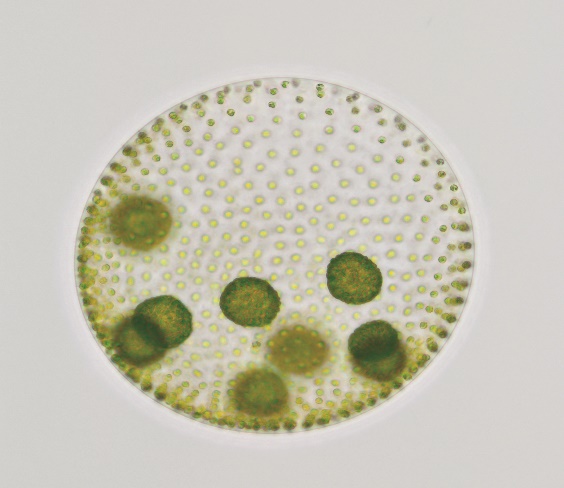
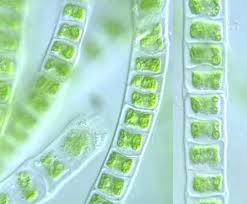
Figure 1
Vegetative reproduction is usually accomplished through fragmentation or the creation of several spore types. Flagellated zoospores produced in zoosporangia are used for asexual reproduction. Sexual reproduction can be isogamous, anisogamous, or oogamous, with significant differences in the kind and development of sex cells. Chlamydomonas, Volvox, Ulothrix, Spirogyra, and Chara are some of the most common green algae.
B. Phaeophyceae: Brown algae, also known as Phaeophyceae, are mostly found in marine environments. They display tremendous variety in size and form. They range in complexity from simple branched filamentous forms (Ectocarpus) to profusely branched forms such as kelps, which can reach 100 meters in height. Chlorophyll a, c, carotenoids, and xanthophylls are all present. Depending on how much of the xanthophyll pigment fucoxanthin is present in them, they range in color from olive green to various colors of brown. Food is stored as laminarin or mannitol, both of which are complex carbs. The vegetative cells have a cellulose wall that is normally covered with a gelatinous layer of algin on the outside. In addition to plastids, the protoplast has a centrally positioned vacuole and nucleus.The plant body has a stalk, the stipe, and a leaf-like photosynthetic organ, the frond, which is normally linked to the substratum by a holdfast. Fragmentation is used in vegetative reproduction. Biflagellate zoospores, which are pear-shaped and have two unequally attached flagella, are used for asexual reproduction in most brown algae. Isogamous, anisogamous, and oogamous sexual reproduction are all possible. Gamete union can occur in water or within the oogonium (oogamous species). The gametes are pyriform (pear-shaped) and have two flagella connected to their sides. Ectocarpus, Dictyota, Laminaria, Sargassum, and Fucus are the most prevalent types.
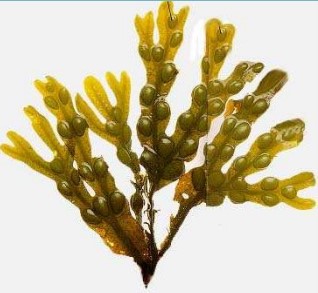
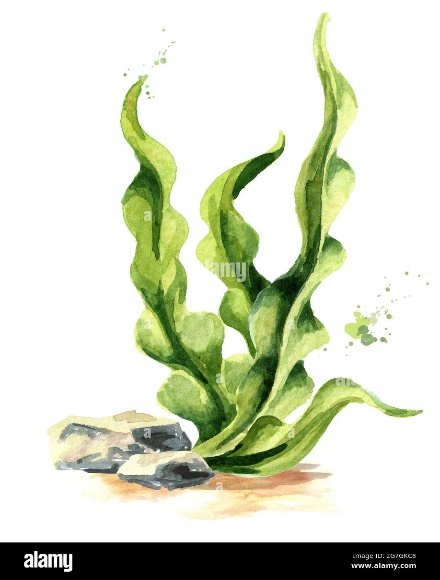
Figure 2
C.Rhodophyceae: Rhodophycea members are frequently referred to as red algae due to the preponderance of the red pigment r-phycoerythrin in their bodies. The majority of red algae are found in the sea, with higher quantities in warmer climates. They can be found in well-lit areas near the surface of the sea as well as at considerable depths in oceans where light is scarce. The majority of red algae have multicellular red thalli. Some of them have a complicated body structure. The food is stored as floridean starch, which has a structure that is extremely similar to amylopectin and glycogen. In most cases, red algae reproduce vegetatively by fragmentation. Non-motile spores and non-motile gametes are used to reproduce asexually and sexually. Sexual reproduction is oogamous, with complicated post-fertilization processes.Polysiphonia, Porphyra, Gracilaria, and Gelidium are the most prevalent members.
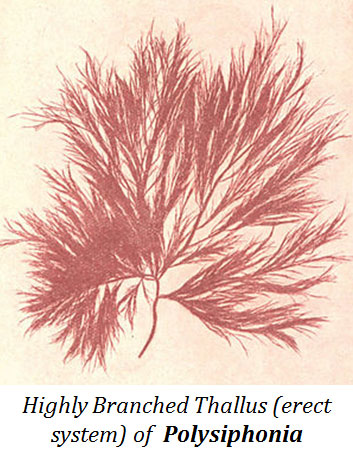
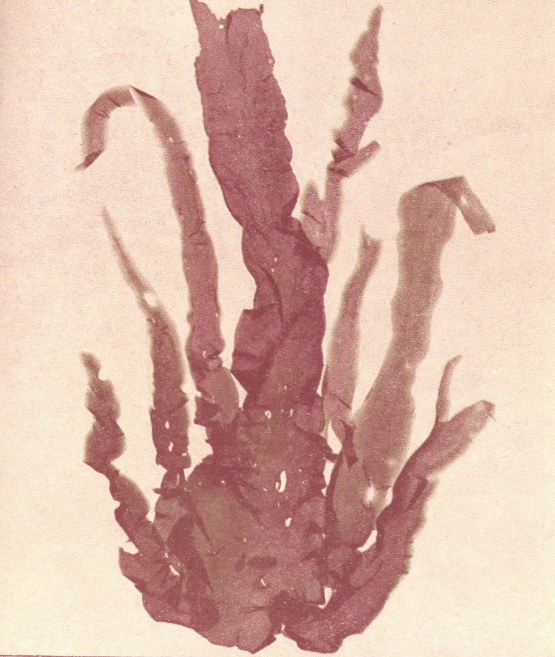
Figure 3
Bryophytes
Bryophytes
Mosses, liverworts, and hornworts are all classified as bryophytes. They are non-vascular plants, meaning they do not have roots or vascular tissue and instead take water and nutrients from the air through their surface. It has a variety of mosses and liverworts that are usually found growing in wet shaded regions in the hills. Bryophytes are also known as amphibians of the plant kingdom since they can live in soil but need water to reproduce sexually. They prefer moist, humid, and shady environments. On bare rocks/soil, they serve a crucial role in plant succession.Bryophytes' plant bodies are more distinct than algae's. It is thallus-like, prostrate or upright, and has unicellular or multicellular rhizoids that connect to the substratum. They are devoid of genuine roots, stems, and leaves. They may have structures that resemble roots, leaves, or stems. The bryophyte's primary plant body is haploid. It is called a gametophyte because it generates gametes. Bryophytes have multicellular sex organs. The male sex organ is referred to as the antheridium. Biflagellate antherozoids are produced by them. Archegonium, the female sex organ, is flask-shaped and produces a single egg. The antherozoids are discharged into the water, where archegonium is present. The zygote is formed when an antherozoid unites with the egg. Zygotes do not go through reduction division immediately.
They generate a sporophyte, which is a multicellular body. The sporophyte is not a free-living organism; it is linked to the photosynthetic gametophyte and feeds on it. To form haploid spores, some sporophyte cells undergo reduction division (meiosis). The gametophyte is produced when these spores germinate.
Bryophytes are not economically important in general, although some mosses supply food for herbivorous mammals, birds, and other creatures. Because of their ability to hold water, Sphagnum moss species have traditionally been utilized as fuel and as packing material for the trans-shipment of living material. Mosses and lichens were the first creatures to inhabit rocks and are hence extremely important ecologically. They break down rocks, allowing higher plants to thrive on the substrate. Mosses decrease the impact of pouring rain and prevent soil erosion by forming dense mats on the soil. Liverworts and mosses are two types of bryophytes.
A. Liverworts: Land plants with no circulatory system are known as liverworts. The liverworts like moist, shaded environments such as stream banks, marshy terrain, damp soil, tree bark, and deep in the forests. The plant body of a liverwort, such as Marchantia, is a thalloid. The thallus is dorsiventral and adheres to the substrate tightly. On the stem-like structures of the leafy members, there are two rows of small leaf-like appendages. In liverworts, asexual reproduction occurs by the fragmentation of thalli or the creation of specialized structures known as gemmae (sing. gemma). Gemmae are asexual, multicellular green buds that grow in little receptacles on the thalli called gemma cups. The gemmae separate from the parent body and germinate, resulting in the formation of new individuals.Male and female sex organs are generated on the same or distinct thalli during sexual reproduction. The sporophyte has three parts: a foot, a seta, and a capsule. Within the capsule, spores are formed after meiosis. These spores become free-living gametophytes when they germinate.
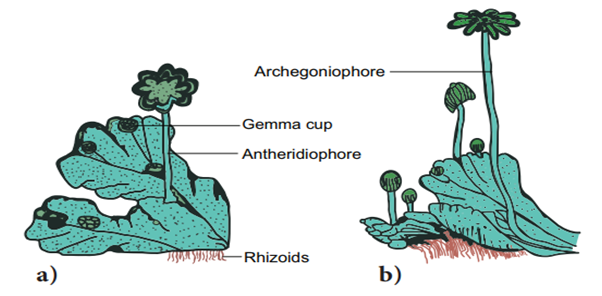
Figure 4: Marchantia (a) Male Thallus. (b) Female Thallus.
B. Mosses: The gametophyte, which has two stages, is the most important stage in a moss' life cycle. The protonema stage, which arises immediately from a spore, is the first stage. It takes the form of a creeping, green, branching, and filamentous stage. The second stage is the leafy stage, which grows as a lateral bud from the secondary protonema. They are made composed of thin, erect axes with spirally arranged leaves. They are linked to the soil by rhizoids, which are multicellular and branching. The sex organs are carried at this stage. Mosses reproduce vegetatively by fragmentation and budding in their secondary protonema. The sex organs antheridia and archegonia are generated at the top of the leafy branches during sexual reproduction.The zygote grows into a sporophyte, which has a foot, seta, and capsule after fertilization. Moss sporophytes are more complex than liverwort sporophytes. There are spores in the capsule. After meiosis, spores are generated. Mosses have a complex system for dispersing their spores. Mosses such as Funaria, Polytrichum, and Sphagnum are common examples.
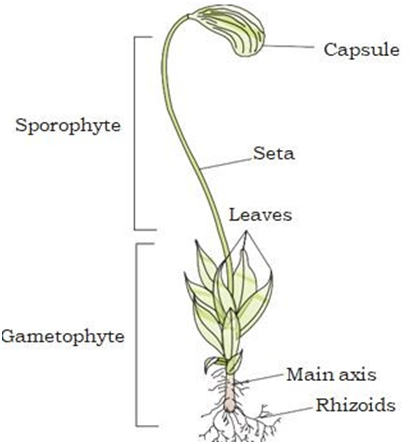
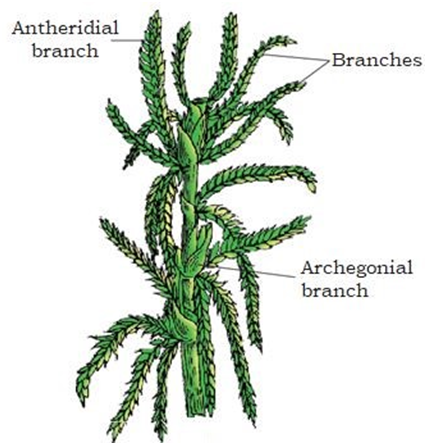
Pteridophytes
Pteridophytes
A pteridophyte is a vascular plant that disperses spores and has xylem and phloem. Pteridophytes are frequently referred to as "cryptogams," meaning that their mechanisms of reproduction are hidden since they do not produce blooms or seeds.Horsetails and ferns are examples of Pteridophytes. Pteridophytes are utilized as soil binders and for therapeutic purposes. They're also commonly used as ornamentals. They are the first terrestrial plants to have vascular tissues – xylem and phloem – according to evolution. Pteridophytes prefer chilly, damp, shady environments, yet some can thrive in sandy soil.
Pteridophytes, have a sporophyte that is divided into real roots, stems, and leaves. The vascular tissues in these organs are well-differentiated. Pteridophyta leaves can be microscopic (microphylls) like Selaginella or huge (macrophylls) like ferns. Sporophytes have sporangia that are cared for by sporophylls, which are leaf-like appendages. Sporophylls can sometimes develop unique compact structures known as strobili or cones (Selaginella, Equisetum).In spore mother cells, the sporangia produce spores by meiosis. The spores germinate to form prothallus, which isa small, multicellular, free-living, primarily photosynthetic thalloid gametophyte. These gametophytes can only thrive in chilly, wet, shaded environments. The proliferation of live pteridophytes is limited and restricted to certain geographical locations due to this specific constrained requirement and the necessity for water for fertilization. Male and female sex organs, known as antheridia and archegonia, are found in gametophytes. The transmission of antherozoids — male gametes released from antheridia – to the mouth of archegonium requires water. The zygote is formed when the male gamete fuses with the egg contained in the archegonium.The zygote then creates a multicellular, well-differentiated sporophyte, which is the pteridophyte's dominant phase. The majority of pteridophytes have homosporous plants, which means that all of their spores are of the same type (e.g. Psilotum, Lycopodium, and Equisetum). Heterosporous genera include Selaginella and Salvinia, which generate two types of spores: macro (big) and micro (small). Megaspores and microspores, respectively, germinate and produce female and male gametophytes. Female gametophytes are kept on the parent sporophytes for varying amounts of time in these plants. The female gametophytes are responsible for the development of the zygotes into newborn embryos. This occurrence is a prelude to the seed habit, which is considered a crucial evolutionary step.
Pteridophytes are divided into four groups: Psilopsida (Psilotum), Lycopsida (Selaginella, Lycopodium), Sphenopsida (Equisetum), and Pteropsida (Dryopteris, Pteris, Adiantum).
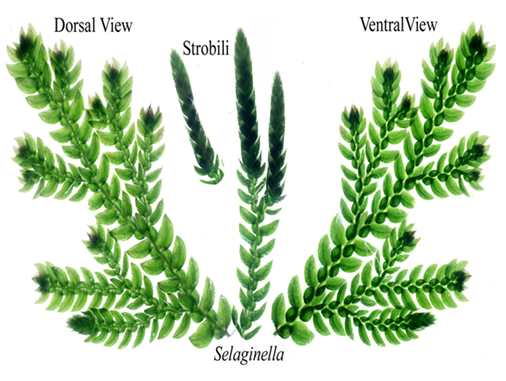
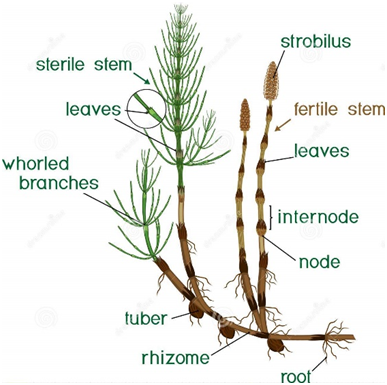
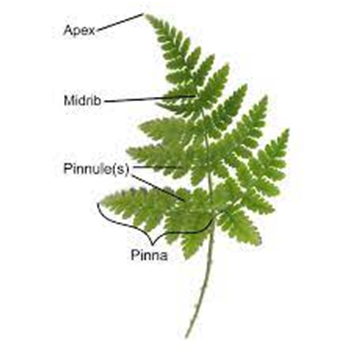
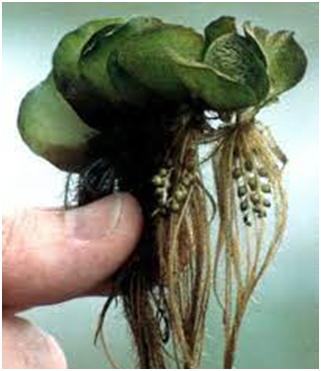
Figure 6
Gymnosperms
Gymnosperm
Any vascular plant that reproduces by means of an exposed seed, or ovule, is referred to as a gymnosperm. Many gymnosperm seeds are carried in cones and are not visible until they reach maturity. Both before and after fertilization, the ovules are not contained by any ovarian wall and remain visible. The seeds that form after fertilization are unprotected, or naked. Gymnosperms are medium- to tall-sized trees and shrubs. The gigantic redwood tree Sequoia, a gymnosperm, is one of the world's tallest tree species. Taproots are the most common type of root. Some genera have mycorrhizal fungi connected with their roots (Pinus), while others have small specialized roots (Cycas) termed coralloid roots that are coupled with Nitrogen-fixing cyanobacteria.Cycas has unbranched stems, whilePinus andCedrushave branched stems. Simple or complicated leaves are possible. The pinnate leaves of Cycas last for a few years. Gymnosperm leaves are well-adapted to tolerate temperature, humidity, and wind extremes. The needle-like leaves of conifers minimize the surface area. Their thick cuticle and recessed stomata also aid in water conservation.
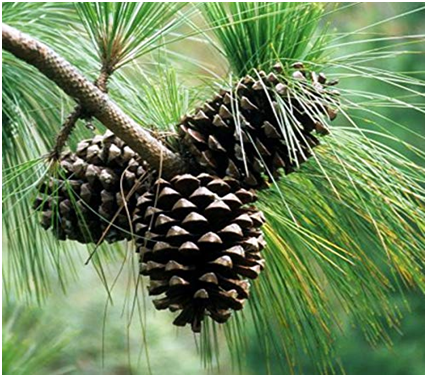
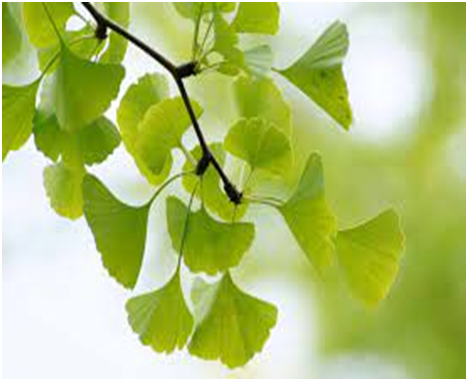
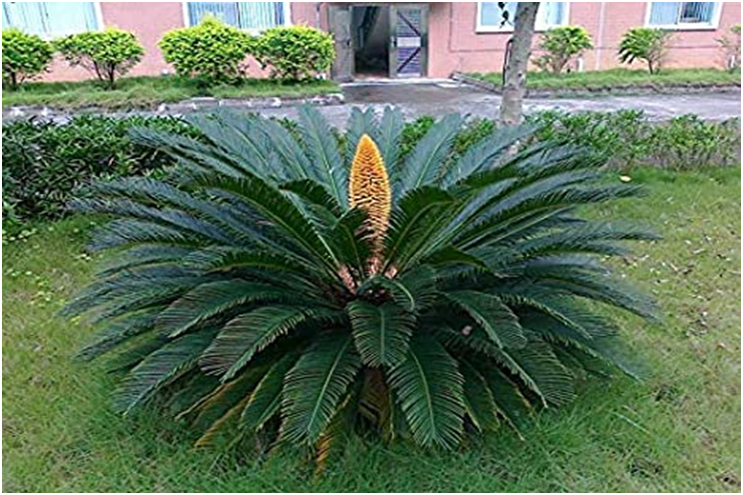
Figure 7
Gymnosperms generate haploid microspores and megaspores and are heterosporous. Both types of spores are formed in sporangia, which are carried on sporophylls that are spirally arranged along an axis to create lax or compact strobili or cones. Microsporangiate or male strobili contain microsporophylls and microsporangia. The microspores mature into a male gametophyte that is extremely small and restricted to a small number of cells. A pollen grain is a gametophyte that has been reduced in size. The microsporangia is where pollen grains grow. Macrosporangiate or female strobili are cones carrying megasporophylls with ovules or megasporangia. On the same tree, male and female cones or strobili can be found (Pinus).
Male cones and megasporophylls, on the other hand, are produced on distinct trees in Cycas. One of the nucellus cells differentiates into the megaspore mother cell. The nucellus is shielded by envelopes, and the resulting structure is known as an ovule. Megasporophylls carry the ovules, which can be grouped to create female cones. The megaspore mother cell splits into four megaspores by meiosis. One of the megaspores within the megasporangium matures into a multicellular female gametophyte with two or more archegonia or female sex organs. Megasporangium also retains the multicellular female gametophyte.
Unlike bryophytes and pteridophytes, male and female gametophytes in gymnosperms do not have their own free-living existence. They stay in the sporangia that are left on the sporophytes. The microsporangium releases the pollen grain. They are carried by the wind and come into touch with the opening of megasporophyll ovules. In the ovules, the pollen tube containing the male gametes develops towards archegonia and discharges its contents near the archegonia's mouth. The zygote develops into an embryo after fertilization, and the ovules mature into seeds. These seeds aren't protected in any way.
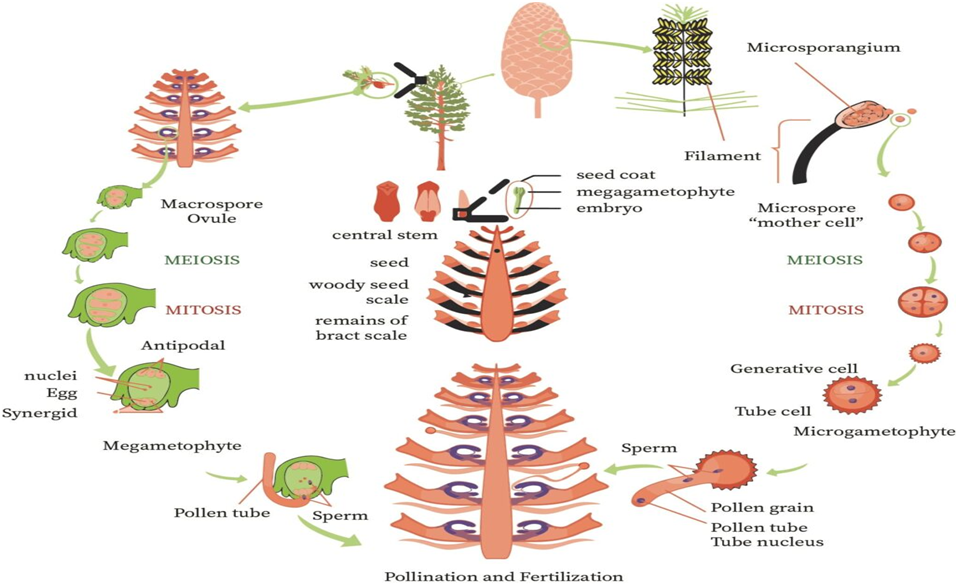
Angiosperms
Angiosperms
Angiosperms (flowering plants) generate pollen grains and ovules in specialized structures known as flowers. The seeds of angiosperms are encased in fruits. The angiosperms are a diverse group of plants that can be found in a variety of environments. They range in size from the tiniest Wolffia to massive Eucalyptus trees (over 100 meters). Food, fodder, fuel, medicines, and a variety of other commercially significant things are all provided by them. There are of two types: monocotyledons and dicotyledons. Seeds with two cotyledons, reticulate venations in leaves, and tetramerous or pentamerous flowers (four or five members in each floral whorl) distinguish dicotyledons.
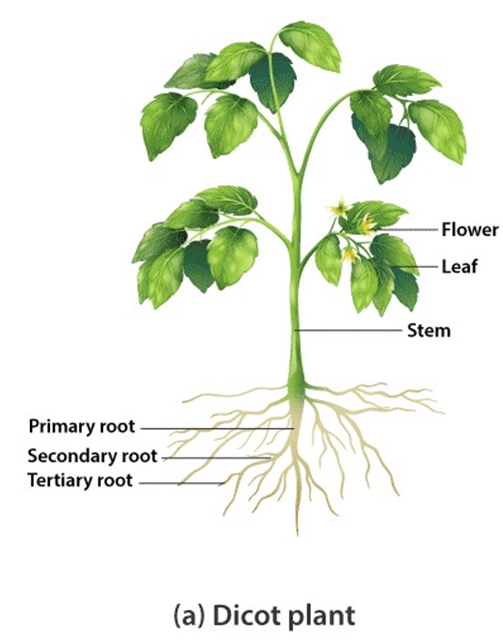
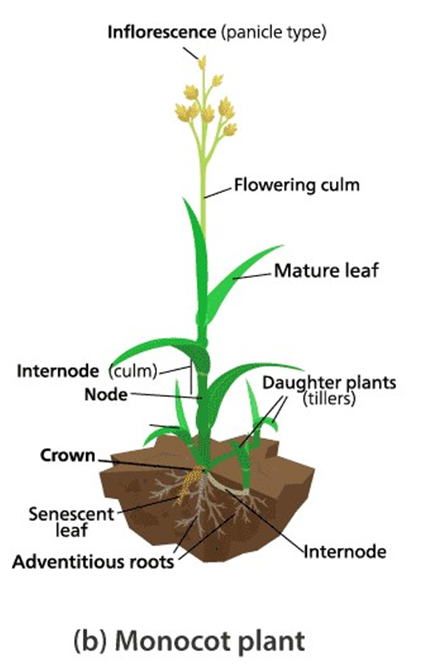
Figure 9: A dicot and monocot plant.
Monocotyledons, on the other hand, have single cotyledonous seeds, leaves with parallel venation, and trimerous flowers with three members in each floral whorl. The stamen is a flower's male sex organ. A short filament with an anther at the tip makes up each stamen. The pollen mother cell divides through meiosis within the anthers to produce microspores, which mature into pollen grains. The pistil is a flower's female sex organ. A large ovary, a long slender style, and the stigma make up the pistil. Ovules can be found inside the ovary. Each ovule has a megaspore mother cell, which goes through meiosis to produce four haploid megaspores. To produce the embryo sac, three of them degenerate and one divides.
A three-celled egg apparatus – one egg cell and two synergids, three antipodal cells, and two polar nuclei – is found in each embryo sac. Eventually, the polar nuclei combine to form a diploid secondary nucleus. Pollen grains are dispersed from the anthers and carried to the stigma of a pistil by wind or other means. Pollination is the word for this process. The pollen grains germinate on the stigma, and the pollen tubes grow through the stigma and style tissues to reach the ovule. Two male gametes are released from the pollen tubes into the embryo sac. Syngamy occurs when one of the male gametes combines with an egg cell to generate a zygote. The triploid primary endosperm nucleus (PEN) is formed when the other male gamete combines with the diploid secondary nucleus.
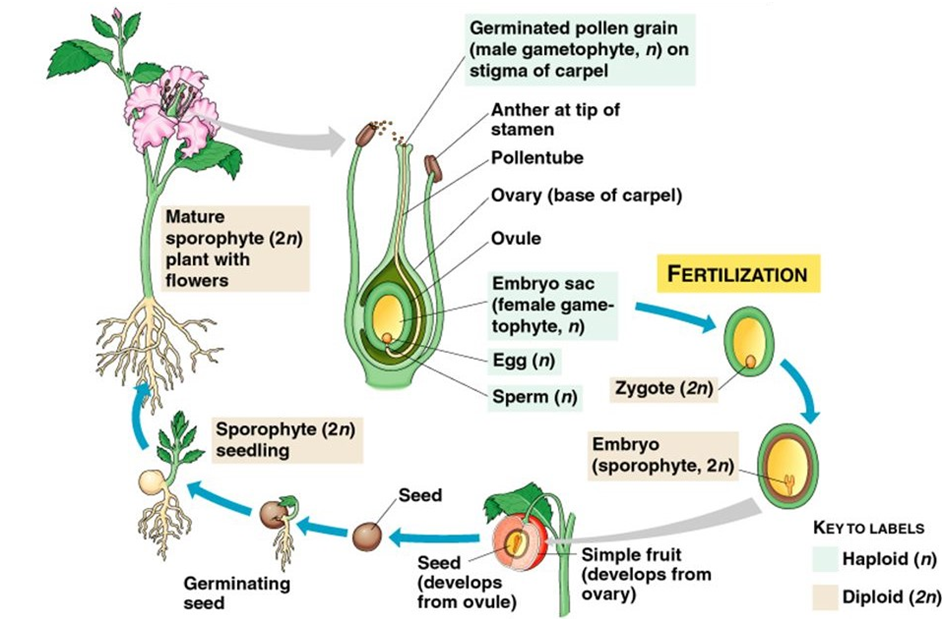
This phenomenon is known as double fertilization because it involves two fusions, syngamy and triple fusion, which is unique to angiosperms. The zygote matures into an embryo (with one or two cotyledons), and the PEN matures into endosperm, which feeds the growing embryo. After fertilization, the synergids and antipodals disintegrate. The ovules become seeds, and the ovaries become fruit, during these activities.
Plant Life Cycles and Alteration of Generations
Plant Life Cycles and Alternation of generations
The alternation of generations, also known as metagenesis or heterogenesis, is the transition between a sexual and asexual phase in an organism's life cycle. Both physically and chromosomally, the two phases, or generations, are often unique.
Mitosis allows haploid and diploid cells in plants to divide. This ability results in the development of haploid and diploid plant bodies. Mitosis creates gametes in the haploid plant body. A gametophyte is represented by this plant body. The zygote divides by mitosis after fertilization to generate a diploid sporophytic plant body. Meiosis produces haploid spores in this plant body. These, in turn, divide by mitosis to produce a haploid plant body.During the life cycle of any sexually reproducing plant, the gamete-producing haploid gametophyte, and the spore-producing diploid sporophyte alternate generations.
Individuals from diverse plant groups differ in the following patterns:
1. The one-celled zygote is the sole representative of a sporophytic generation. Sporophytes do not exist as free-living organisms. The zygote undergoes meiosis, which leads tothe creation of haploid spores. The gametophyte is formed when haploid spores divide mitotically. The free-living gametophyte is the major photosynthetic phase in such plants. The term "haplontic" refers to this type of life cycle. This pattern is found in many algae, including Volvox, Spirogyra, and some Chlamydomonas species.
2. The kind in which the diploid sporophyte is the dominant, photosynthetic, and independent phase of the plant is the other extreme. The single to few-celled haploid gametophyte represents the gametophytic phase. This type of life cycle is known as diplontic.This pattern is shown by the alga Fucus sp. Furthermore, all seed-bearing plants, such as gymnosperms and angiosperms, follow this pattern with some modifications, with the gametophytic phase ranging from single to multicellular.
3. Bryophytes and pteridophytes, for example, have an intermediate state (Haplo-diplontic), in which both phases are multicellular. Their dominating periods, however, are distinct.
A haploid gametophyte represents a dominant, autonomous, photosynthetic, thalloid, or erect phase that alternates with the short-livedmulticellular sporophyte that is entirely or partially dependent on the gametophyte for anchoring and nourishment. This pattern is found in all bryophytes. A dominant, autonomous, photosynthetic, vascular plant body represents the diploid sporophyte. It alternates with a haploid gametophyte that is multicellular, saprophytic/autotrophic, and independent but short-lived. The haplo-diplontic life cycle is a pattern like this.
All pteridophytes exhibit this pattern. Interestingly, while most algal genera are haplontic, some of them such as Ectocarpus, Polysiphonia, and kelps are haplo-diplontic. Fucus, an alga is diplontic.
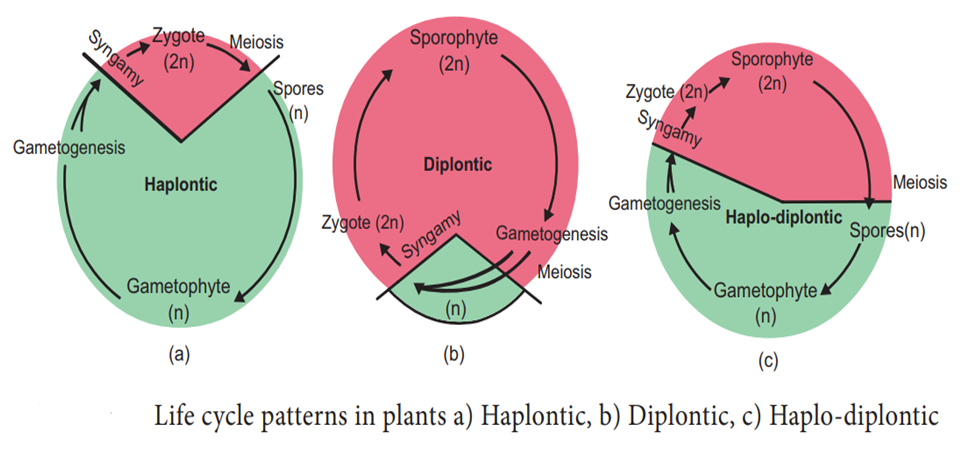
Basis of Classification
Basis of classification in Animals
Despite differences in structure and shape across animals, there are essential similarities in cell organization, body symmetry, coelom type, and digestive, circulatory, and reproductive system patterns. These characteristics are used to classify animals, and some of them are covered here. The requirement for classification grows in importance as more than a million species of animals have been described to date. Newly described species can also be assigned a systematic position thanks to categorization.
A. Level of organization: Even though all members of Animalia are multicellular, they do not all have the same cell organization pattern. Sponge cells, for example, are grouped as loose cell aggregates, indicating that they have a cellular level of organization. Among the cells, there is some division of labour (activities). The cell arrangement in coelenterates is more complicated. The cells that perform the same function are grouped together ies, which is referred to as the tissue level of organization. Members of the Platyhelminthes and other higher phyla have an even higher degree of organization, namely the organ level, in which tissues are gathered together to form organs, each specialized for a certain function. Organs have come together to form functional systems in creatures including Annelids, Arthropods, Molluscs, Echinoderms, and Chordates.
B. Symmetry: The symmetry of animals can be used to classify them. Sponges are generally asymmetrical, which means that any plane passing through the centre split them in half evenly. Radial symmetry occurs when any plane traveling through the body's central axis divides the organism into two identical halves. This is the body plan of coelenterates, ctenophores, and echinoderms. Bilateral symmetry is found in animals such as annelids, arthropods, and others whose bodies can be divided into identical left and right halves in just one plane.
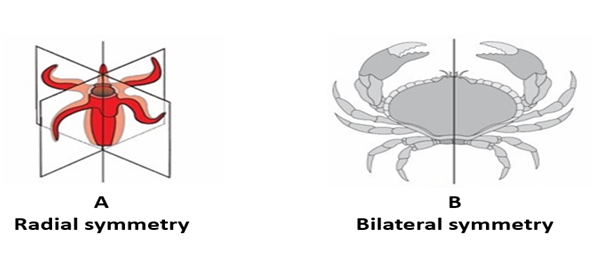
C. Germinal layers: During embryonic development, a germ layer is the first layer of cells that arises. Gastrulation is the process through which an early embryo develops three germ layers. Ectoderm, endoderm, and mesoderm are the three types of cellular layers that make up the body. Diploblastic creatures, such as coelenterates, have their cells organized in two embryonic layers, external ectoderm, and an internal endoderm. Between the ectoderm and the endoderm, there is an undifferentiated layer called mesoglea. Triploblastic animals are those in which the growing embryo has a third germinal layer, mesoderm, between the ectoderm and endoderm.
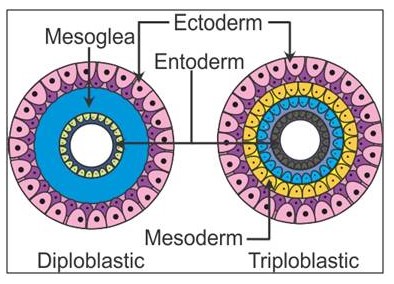
D.Coelom: When it comes to classification, the presence or absence of a cavity between the body wall and the gut wall is crucial. The coelom is the name for the bodily cavity that is lined by mesoderm. Coelomates are animals that have a coelom, such as annelids, mollusks, arthropods, echinoderms, hemichordates, and chordates. Mesoderm does not line the body cavity of some animals; instead, it appears as scattered pouches in between the ectoderm and endoderm. Pseudocoelom is the name for such a bodily cavity, and animals with them are known as pseudocoelomates, such as aschelminthes. Acoelomates, such as Platyhelminthes, are animals that do not have a body cavity.
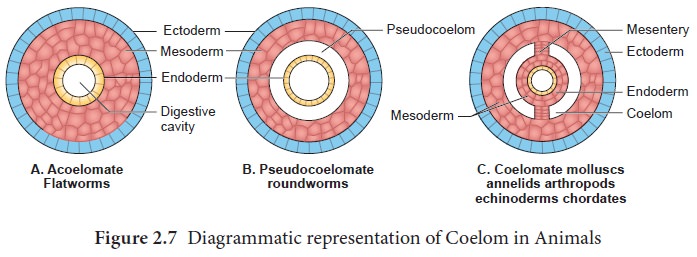
E. Segmentation: The body of several animals is divided into segments both visibly and internally, with at least some organs repeating serially. The body of an earthworm, for example, displays a pattern known as metameric segmentation, and the phenomenon is known as metamerism.
F. Notochord: In some animals, the notochord is a mesodermally derived rod-like structure that forms on the dorsal side during embryonic development. Chordates are creatures that have a notochord, while non-chordates are animals that do not have one, such as Porifera and Echinoderms.
The broad classification of Animalia is based on common fundamentalfeatures as discussed above. A schematic diagram for the same is given below.
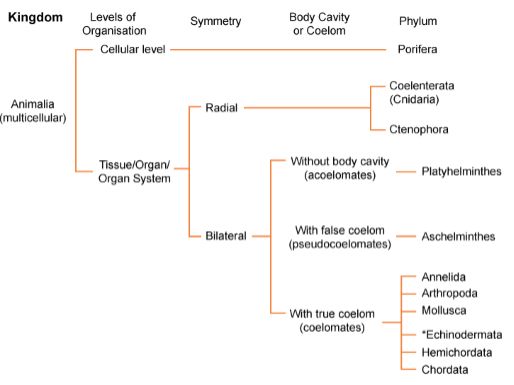
Phylum : Porifera
Phylum Porifera
This animal group comprises Sponges and is thought to be the oldest on the planet. Sponges are the most basic multicellular creatures. They don't have any tissues or organs, despite being multicellular. Sponges need to be near water, thus they dwell in an aquatic environment. Water is essential for nutrient absorption, gas exchange, and excretion. The sponges' bodies have numerous holes or pores known as Ostia. Sponge bodies are built so that water can circulate through them, filtering out food and absorbing dissolved oxygen while also removing waste.This phylum of organisms lacks a specialized digestive, neurological, or circulatory system. Instead, they have a canal or water transport system that performs the activities of digesting, excretion, and gas exchange.
Their bodies are asymmetrical, and their design has been optimized to facilitate the most efficient flow of water via the core hollow that is present inside. Bacteria and other food particles found in the water are their main sources of nutrition. The spongocoel is a huge central hollow canal in their bodies. Water enters the spongocoel through the Ostia and exits through the osculum. Choanocytes or collar cells, with their flagellum jutting out, line up the spongocoel and canals.The water is moved throughout the sponge's body by the beating of this flagellum from all choanocytes. Common examples areSycon (Scypha), Spongilla (Freshwatersponge), and Euspongia(Bath sponge).
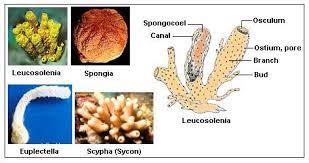
Phylum : Coelenterata (Cnidaria)
Phylum Coelenterata
They are also known by the name Cnidaria. They are radially symmetrical aquatic, primarily marine, sessile, or free-swimming organisms. Typically, these are invertebrate species with a very basic tissue arrangement. Coelenterates can be found in colonies or alone. Coelenterates are the simplest animal group with genuine tissues and the coelenteron or gastrovascular cavity as a distinguishing feature. The word Cnidaria comes from the stinging capsules or nematocysts found on the tentacles and body, which are called Cnidoblasts or Cnidocytes. Cnidoblasts are the phylum Cnidaria's distinguishing trait.They contain stinging capsules called nematocysts. It aids in both prey capture and defence. Cnidoblasts are employed for prey capture, defence, and anchoring. Cnidarians are diploblastic and have tissue-level organization. They have a single aperture in the center of their gastro-vascular cavity, and their mouth is hypostome. Extracellular and intracellular digestion are both involved.The skeleton of some cnidarians, such as corals, is made of calcium carbonate. Polyp and medusa are the two primary body types of cnidarians. The former, like Hydra, Adamsia, and others, are sessile and cylindrical, whereas the latter, like Aurelia or jellyfish, is umbrella-shaped and free-swimming. Cnidarians often show alternation of generations (Metagenesis). When both polyps and medusae exist within a Cnidarian life cycle, polyps reproduce asexually by budding off medusae, and medusae form the polyps sexually (e.g. Obelia). Examples: Physalia (Portuguese man-of-war), Adamsia (Sea anemone), Pennatula (Sea-pen), Gorgonia (Sea-fan), and Meandrina (Brain coral).
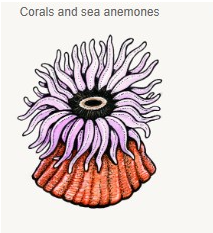
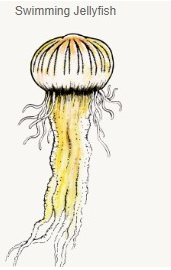
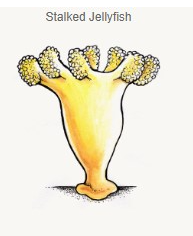
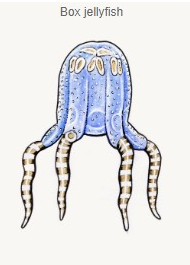
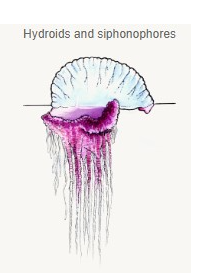
Figure 6: Phylum Cnidaria.
Phylum : Ctenophora
Phylum Ctenophora
Ctenophores, often known as sea walnuts or comb jellies, are biradially symmetrical, diploblastic animals with a tissue-level organization that are entirely marine. The body has eight rows of ciliated comb plates on the outside that aid in movement. The existence of comb plates containing cilia, which are employed for propulsion, distinguishes the phylum. Ctenophores have a more complex body than sponges, although it is less complicated than bilaterians. They have tissue-level organization, just like cnidarians. Extracellular and intracellular digestion both are observed. Ctenophores exhibit a lot of bioluminescence (the ability of a living creature to emit light). They do not have stinging cells. In order to capture prey, ctenophores possess sticky cells called Colloblasts. The sexes are not divided. Sexual reproduction is the only way to reproduce.
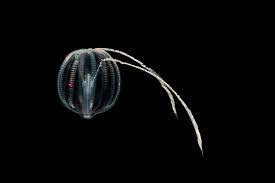
External fertilization is used in conjunction with indirect development.Examples arePleurobrachia and Ctenoplana.
Phylum: Platyhelminthes
Phylum Platyhelminthes
Flatworms and tapeworms are popular names for Platyhelminthes. They are a type of invertebrate with a soft body. In reality, there are over 20,000 different species of these animals. A few of these parasites live on humans and other animals as parasites. Furthermore, because of their parasitic nature, they do cause some discomfort to the host animal. Schistosomiasis, often known asbilharziasis, is a parasitic flatworm disease. A few species in this phylum are known to be major causes of disease. They are triploblastic, acoelomate, and bilaterally symmetrical. Their body is dorsoventrally flattened which is its most noticeable feature. They are flat because the body has no cavities. They also lack specialized systems and do not have segmented bodies. They have no specialized circulatory and respiratory organs, which allows oxygen and nutrients to pass through their bodies by diffusion.Around 80% of the flatworms are parasitic, with a few free-form flatworms thrown in for good measure. Scavengers or predators are the free-living forms. The parasitic species feed on the tissues of the organism they dwell in. Planaria, for example, has a high potential for regeneration. This phylum's animals come in a wide range of sizes. Some are minuscule, while others can reach lengths of up to two feet. They're also hermaphrodites, which means they have both sexes living in the same body.They typically reproduce both sexually and asexually. For instance, Taenia (Tapeworm) and Fasciola (Liver fluke).
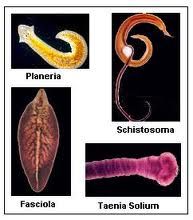
Phylum: Aschelminthes / Nemathelminthes
Phylum Aschelminthes
Roundworms are the popular name for Aschelminthes. They are triploblastic, bilaterally symmetrical, and pseudocoelomates creatures. Aschelminthes can be parasitic or free-living. The free-living creatures, which feed on bacteria, are abundant in soils and sediments. Others are plant parasites that can cause disease in economically significant crops. The remaining parasites can be found in both animals and humans. Hookworms, pinworms (Enterobius), Guinea worms (Dracunculus), and intestinal roundworms are examples of parasitic worms. A well-developed muscular pharynx completes the alimentary canal. Through the excretory hole, an excretory tube transfers body wastes from the body cavity. In most of the Aschelminthes, the respiratory and circulatory systems are absent. They utilize the process of diffusion for the circulation of oxygen. Aschelminthes are dioecious, which means they are separate. Females are frequently taller than males.Internal fertilization occurs, and development can be either direct (the young resemble the adult) or indirect. The Giant Intestinal Roundworm (Ascaris lumbricoides) is an endoparasite that lives in the human gut. They're quite prevalent in kids. Ascariasis is a disease caused by these worms. Many adult roundworms dwell inside the intestine, obstructing the digestive tract.Examples: Ascaris (Roundworm), Wuchereria (Filaria worm), Ancylostoma (Hookworm).

Phylum : Annelida
Phylum Annelida
Phylum Annelida contains around 17000 species. Ringworms and segmented worms are other names for annelids. They can be found in a variety of habitats, including coastal waterways, freshwater, and wet terrestrial places. The annelids can be as small as a few centimeters long or as large as three meters. In addition, some species in this phylum have unusual forms and vibrant colors. Annelids are invertebrate creatures with bilateral symmetry. They are triploblastic and coelomate. Their body surface is divided by segments called metameres. They have longitudinal and circular muscles that let them move around. Nereis and other aquatic annelids have lateral appendages called parapodia that aid in swimming.There is a closed circulatory system in place. Osmoregulation and excretion are aided by nephridia (sing. nephridium). The neural system is made up of paired ganglia (sing. ganglion) coupled to a double ventral nerve cord via lateral nerves. Earthworms and leeches are monoecious, but Nereis, an aquatic variety, is dioecious. Sexual reproduction is prevalent. Nereis,Pheretima (Earthworm), and Hirudinaria are other examples (Bloodsucking leech).
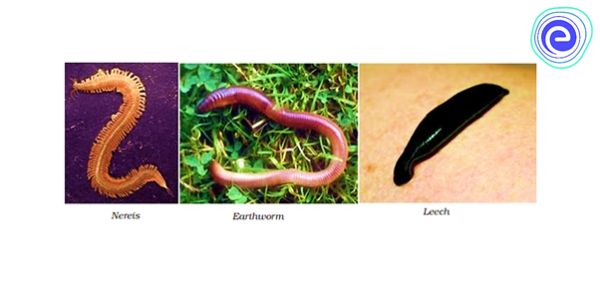
Phylum : Arthropoda
Phylum Arthropoda
Arthropods are animals with joint legs. Spiders, ants, bees, crabs, shrimps, millipedes, centipedes, and other insects belong to this phylum of the kingdom Animalia. Arthropods make up more than two-thirds of all identified species on the planet. The presence of an exoskeleton, which makes arthropods adaptable, isprotective and allows flexibility and mobility.It is largely responsible for their success and survival. They are organized at the organ-system level. They are coelomate animals that are triploblastic, segmented, and bilaterally symmetrical. Arthropods have a chitinous exoskeleton covering their bodies. The head, thorax, and abdomen make up the arthropod body. Their appendages are joined. Gills, book gills, book lungs, and the tracheal system are examples of respiratory organs.The circulatory system is open. There are sensory organs like antennae, eyes (complex and simple), and statocysts for balance and orientation. Malpighian tubules are used for excretion. The majority of them are dioecious. Internal fertilization is common. The majority of them are oviparous. Direct or indirect development is possible. Apis (Honey bee), Bombyx (Silkworm), and Laccifer(Lac insect)are some examples of commercially important insects. Anopheles, Culex, and Aedes are examples of vectors (Mosquitoes). Limulus (King crab) is known as a living fossil, while Locusta(Locust) is a gregarious pest.
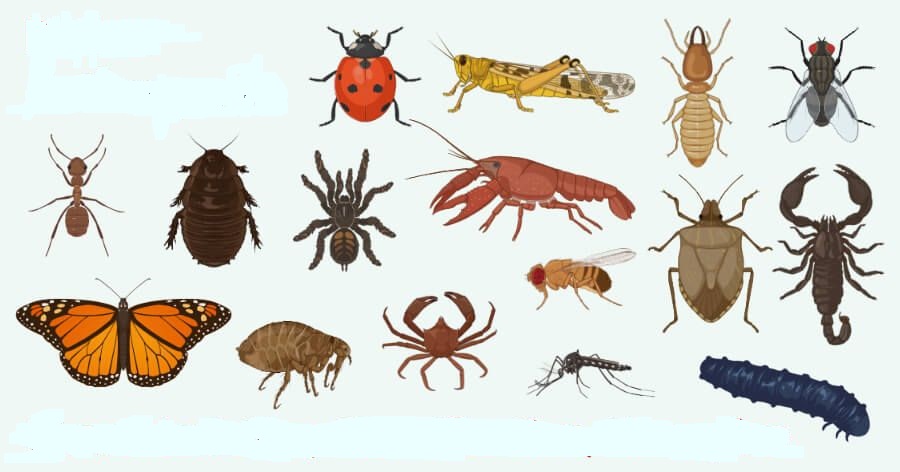
Phylum : Mollusca
Phylum Mollusca
Molluscs are a diverse group of organisms that play a vital role in the global ecology. A calciferous shell is found on many creatures in this phylum. The bodies are usually soft and protected by a hard exoskeleton. They can be found both on land and in the deepest parts of the ocean. This is the second-largest phylum of animals. Molluscs are organ-system-organized terrestrial or aquatic (marine or freshwater) animals. They are animals that are bilaterally symmetrical, triploblastic, and coelomate. A calcareous shell covers the body, which is unsegmented with a distinct head, muscular foot, and visceral hump. Over the visceral hump, a soft and spongy layer of skin forms a mantle.The mantle cavity is the region between the hump and the mantle, and it contains feather-like gills. They have breathing and excretory systems. Sensory tentacles can be found in the anterior head region. The radula, a file-like rasping organ in the mouth, is used for feeding. They are both a food and a jewellery source. The firm shells are used to create stunning jewellery. Even though it sounds strange, these are also raised as pets in some parts of the world. Bivalve and gastropod pearls are particularly valuable because they are lined with nacre. Natural pearls are generated when a small foreign object becomes lodged between the mollusc's mantle and shell.Bivalve molluscs are useful as freshwater and marine bioindicators. However, not all molluscs are beneficial to humans. Snails and slugs, for example, are considered pests.They are usually dioecious and oviparous with indirect development. Examples: Pila (Apple snail), Pinctada (Pearl oyster), Sepia (Cuttlefish), Loligo (Squid), Octopus (Devilfish), Aplysia (Seahare), Dentalium (Tusk shell), and Chaetopleura (Chiton).
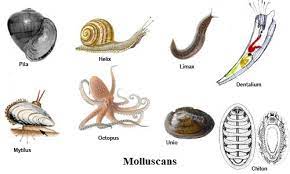
Phylum : Echinodermata
Phylum Echinodermata
Invertebrates with spiny skin are known as echinoderms. The endoskeleton of these creatures is made up of calcareous ossicles. All of them are marine, having organ-system organization. There are no freshwater or terrestrial organisms in this phylum. Adult echinoderms have radial symmetry, whereas larvae have bilateral symmetry. They are coelomate and triploblastic creatures. With the mouth on the bottom (ventral) side and the anus on the upper (dorsal) side, the digestive system is complete. Echinoderms are distinguished by the presence of a water vascular system that aids motility, food capture and transport, and breathing. This system has a central ring canal and radial canals that extend along each arm. Through these structures, water circulates. The madreporite is a structure present on top of the body. This is responsible for the regulation of the water in the water vascular system. There is no excretory system. Sexes are distinct. Reproduce sexually. External fertilization is common. The development of free-swimming larva is indirect. Asterias (starfish), Echinus (sea urchin), Antedon (sea lily), Cucumaria (sea cucumber), and Ophiura (Brittle star) are among examples.
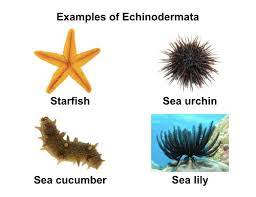
Phylum : Hemichordata / Stomachordata
Phylum Hemichordata
This phylum is made up of marine deuterostome creatures. They are sometimes referred to as the Echinodermata's sister group. Phylum Hemichordata is a small phylum with only 100 recognized species and animals that resemble worms. Some species live alone, while others live in colonies. Hemichordata was previously classified as a sub-phylum of the Chordata phylum. However, because these species lack a post-anal tail or even the notochord, which is a distinguishing trait of chordates, they are now classified as a different phylum under non-Chordata.
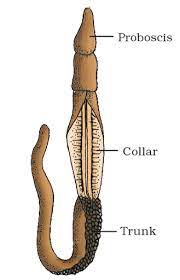
Hemichordates, on the other hand, have a primitive structure comparable to the notochord in the collar region. This phylum is made up of a tiny group of worm-like marine organisms that are organized at the organ-system level.This phylum is made up of marine deuterostome creatures. They are sometimes referred to as the Echinodermata's sister group. Hemichordatesare bilaterally symmetrical and triploblastic animals.The body is divisible into proboscis, collar, and trunk.Simple, open, and well-developed circulatory system is present. The alimentary canal is a straight, complete, or U-shaped tube.Excretion by a single glomerulus situated in the proboscis.Reproduction is mainly sexual. Sexes are usually separate.External fertilization takes place in seawater.Development can be direct or indirect.An important example of a hemichordate is Balanoglossus or acorn worm. Other species are Saccoglossus, Rhabdopleura, Atubaria, and Dendrograptus.
phylum chordata
Phylum Chordata
This is the third most populous phylum in the animal kingdom. The existence of a notochord, a dorsal hollow nerve cord, a post-anal tail, and paired pharyngeal gill slits distinguishes animals belonging to the phylum Chordata. These are bilaterally symmetrical, triploblastic, coelomates that are organized at the organ-system level. Their circulatory system is closed. The Chordata phylum is subdivided into three subphyla:
The Chordata phylum is subdivided into three subphyla:
(a) Urochordata or Tunicata: Examples: Ascidia, Salpa, and Doliolum;
(b) Cephalochordata: Example: Branchiostoma; Amphioxus or Lancelet
(c)Vertebrata: Example: Horse, Humans
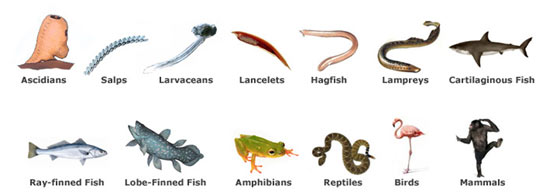
Subphyla Urochordata and Cephalochordata are collectively referred to as protochordate andare only found in the ocean. The notochord is only present in the larval tail of Urochordata, but it extends from the head to the tail area of Cephalochordata and is present throughout their lives.During the embryonic period, members of the Vertebrata subphylum have a notochord. In adulthood, the notochord is replaced by a cartilaginous or bony vertebral column. All chordates are vertebrates, however, not all chordates are vertebrates. Vertebrates have a ventral muscular heart with two, three, or four chambers, kidneys for excretion and osmoregulation, and paired appendages that can be fins or limbs.
The subphylum Vertebrata is further divided as shown below:
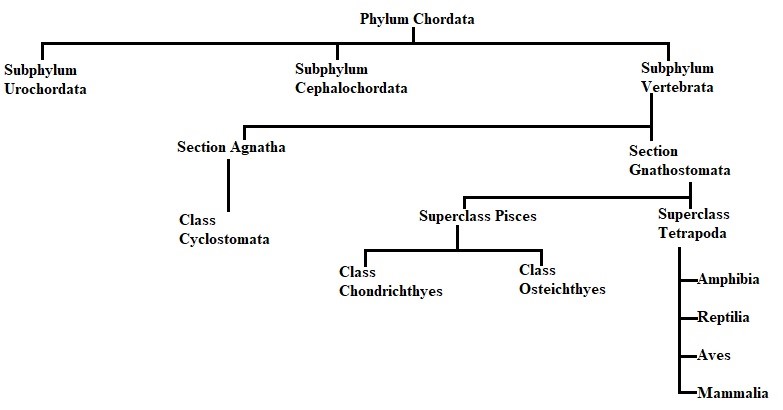
Agnatha comprises jawless organisms which consist of only one subdivision, Cyclostomata. Gnathostomata comprises animals having jaws and can be further divided into fin-bearing Pisces and limb-bearing Tetrapods.
A. Class Cyclostomata: Cyclostomata comprises loving members of the class who are ectoparasiteson some fishes. For respiration, they have an extended body with 6-15 pairs of gill slits. Cyclostomes have a circular sucking mouth with no jaws. Scales are missing from their bodies, and they have paired fins. The cranium and spinal column are made of cartilage. The circulation is closed. Cyclostomes are marine creatures that travel to freshwater to procreate. They die within a few days of spawning. After metamorphosis, their larvae return to the sea. Petromyzon (Lamprey) and Myxine (Hagfish) are two examples.
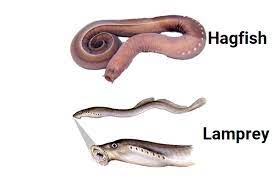
B. Class Chondrichthyes: They are streamlined aquatic organisms with a cartilaginous endoskeleton. The mouth is situated ventrally. The notochord remains throughout life. Gill slits are distinct and lack an operculum (gill cover). The skin is robust and covered in little placoid scales. Teeth are modified placoid scales that point backward. Their jaws are extremely strong. These creatures are predators. They must swim frequently to prevent sinking due to the lack of an air bladder. It has two chambers (one auricle and one ventricle). Some have electric organs (such as Torpedo) and others have poison stings (e.g., Trygon). They are cold-blooded (poikilothermous) animals, meaning they can't control their body temperature. Sexes are distinct. Males have claspers on their pelvic fins.Internal fertilization is present, and many of them are viviparous. Scoliodon(dogfish), Pristis (sawfish), Carcharodon (great white shark), and Trygon(Stingray)are among examples.
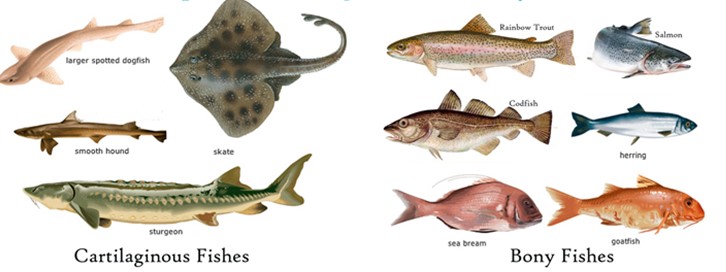
C.Class Osteichthyes: With a bony endoskeleton, it contains both marine and freshwater fish. Their physique is slim. The mouth is primarily terminal. They have four pairs of gills on each side, which are covered by an operculum. Cycloid/ctenoid scales cover the skin. The presence of an air bladder influences buoyancy. A two-chambered heart (one auricle and one ventricle). They're cold-blooded creatures. Sexes are distinct. External fertilization is common. They are generally oviparous and have a straight development. Examples includeFreshwater – Labeo (Rohu), Catla (Katla), Clarias (Magur); Marine – Exocoetus (Flying fish), Hippocampus (Sea horse); Aquarium – Betta (Fighting fish), Pterophyllum(Angelfish).
D. Class Amphibia: Amphibians can survive in both aquatic and terrestrial environments. They all have two sets of limbs. The body is divided into two parts: head and trunk. Some individuals may have a tail. The skin of amphibians is wet (without scales). Eyelids cover the eyes. The ear is represented by a tympanum. The alimentary canal, urinary system, and reproductive tract all open into a single chamber called the cloaca, which is visible from the outside. Gills, lungs, and skin are all used to breathe. There are three chambers in the heart (two auricles and one ventricle). They are cold-blooded creatures. Sexes are distinct. External fertilization is used. They are oviparous and have indirect development. Bufo (toad), Rana (frog), Hyla (tree frog), Salamandra(salamander), and Ichthyophis (Limbless amphibian) are a few examples.
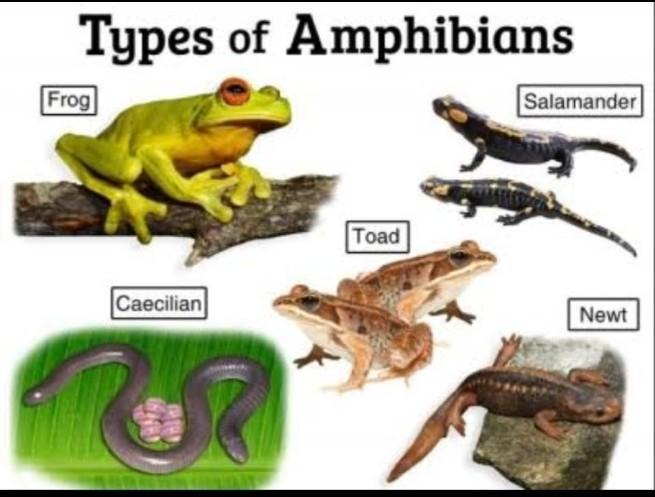
E. Class Reptilia: This class includes organisms having to creep or crawla mode of locomotion. They are generally terrestrial animals with dry, cornified skin, epidermal scales, or scutes covering their bodies. External ear holes are not present. Tympanum stands for the ear. Limbs are two pairs when present. Crocodiles have four chambers in their hearts, which are usually three. Reptiles are Poikilotherms. As skin cast, snakes and lizards shed their scales. Sexes are distinct. Internal fertilisation. They are oviparous and have straight development. Chelone (turtle), Testudo (tortoise), Chameleon (tree lizard), Calotes (garden lizard), Crocodilus (crocodile), and Alligator are just a few examples. Poisonous s.nakes — Naja (Cobra), Bangarus (Krait), Vipera, (Viper) etc. are also known as reptiles.
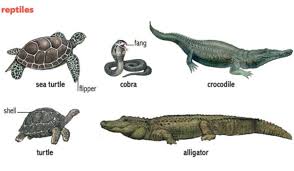
F.Class Aves: The presence of feathers distinguishes Aves (birds), and most of them can fly, except flightless birds (e.g., Ostrich and Emu). They have a beak. The forelimbs have been transformed into wings. Scales cover the hind limbs, which are modified for walking, swimming, and grasping tree branches. Except for the oil gland at the base of the tail, the skin is dry and lacks glands. The long bones are hollow with air spaces, and the endoskeleton is entirely ossified (bony) (pneumatic). The crop and gizzard are extra chambers in the digestive tract of birds. The heart has four chambers in total. They are warm-blooded (homoeothermic) creatures, which means they can keep their body temperature constant. Lungs are used to breathe. Respiration is aided by air sacs attached to the lungs. Sexes are distinct.Internal fertilization is present. They are oviparous and have direct development. Corvus (Crow), Columba (Pigeon), Psittacula (Parrot), Struthio (Ostrich), Pavo (Peacock), Aptenodytes (Penguin), and Neophron (Vulture) are some examples.
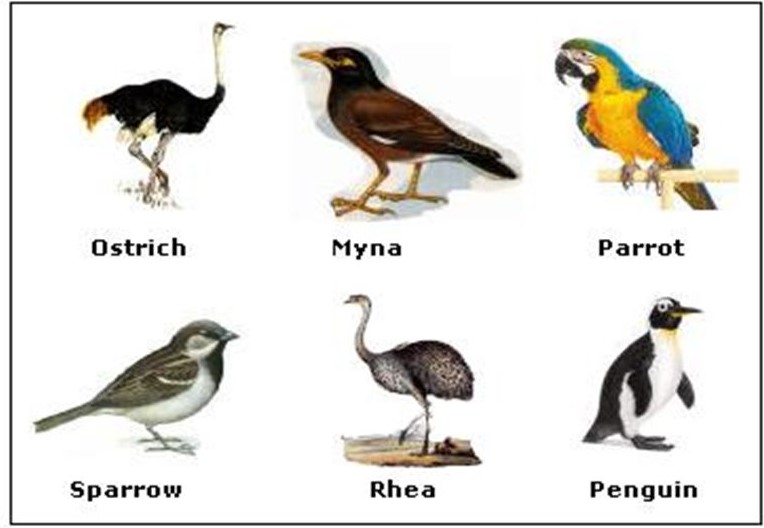
G. Class Mammalia: In the phylum Chordata, Mammalia is the most developed class. Polar ice caps, deserts, mountains, woods, grasslands, and gloomy tunnels are all places where mammals can be found. Some have developed the ability to fly or live in water. The existence of milk-producing glands (mammary glands), which nourish the young, is the most distinguishing mammalian trait. They have two pairs of limbs, one for walking, the other for running, climbing, digging, swimming, and flying. Mammalian skin is remarkable in that it has hair. External pinnae or ears are present. The jaw contains a variety of tooth kinds. The human heart has four chambers. They're the same temperature. Lungs are used to breathe. Sexes are distinct, and fertilization takes place internally.
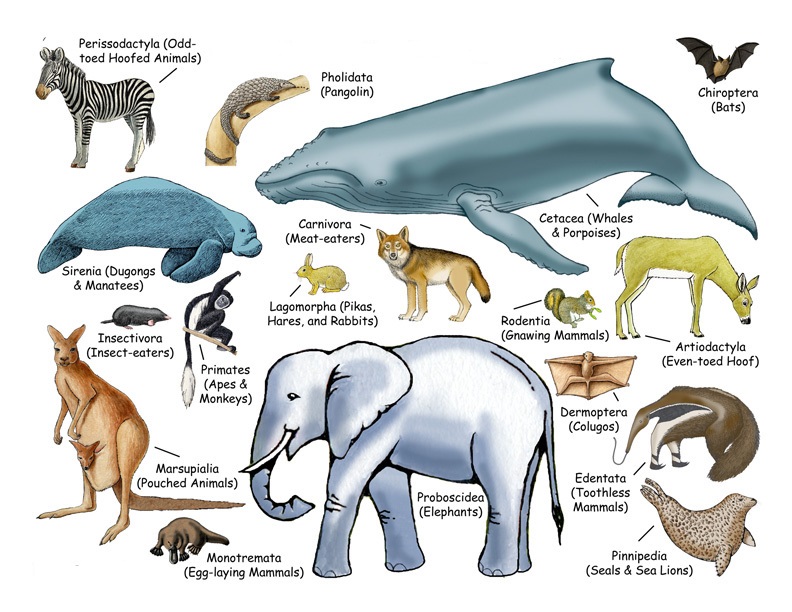
With a few exceptions, they are viviparous and develop directly. Macropus (Kangaroo), Pteropus (Flying fox), Camelus (Camel), Macaca (Monkey), Rattus (Rat), Canis (Dog), Felis (Cat), Elephas (Elephant), Equus (Horse), Delphinus (Common dolphin), Balaenoptera (Blue whale), Panthera tigris (Tiger), Panthera leo (Lion).

 AACHARYA KOTA CLASSES
AACHARYA KOTA CLASSES
